Are you looking for some Norway fun facts? Maybe you’re an avid quizzer or just curious by nature.
I get it, I’m a fun fact kind of person too. I really like learning about the countries I visit, the weirder the information the better. Not only for Instagram captioning purposes but also because I love to surprise people with interesting facts here and there.
As a Norwegian, I might be biased, but I think Norway is a very beautiful and interesting country. While modern Norway as we know it today only dates back 200 years, this beautiful land has such a long and rich history.
You have probably heard a lot about the Vikings and seen dreamy photos of our impressive fjords. And you might even know that Norway is home to Northern Europe’s tallest peak, Galdhøpiggen.
But did you know that…
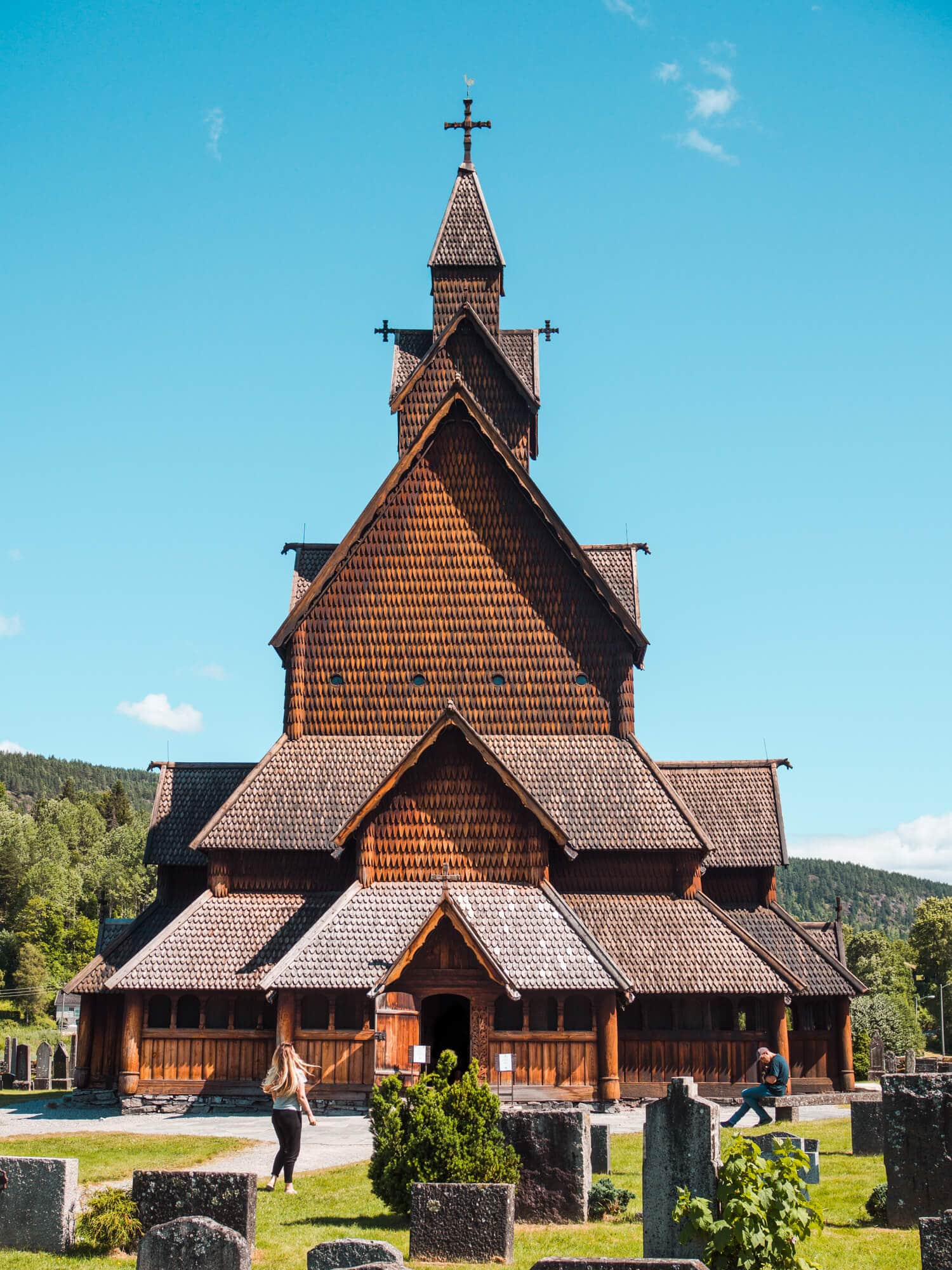
✅ DON’T FORGET TRAVEL INSURANCE!
SafetyWing is an affordable subscription travel insurance that you can purchase even after departure, and pause when you’re home.
Article overview
- 1. Viking Harald Fairhair was the first king
- 2. Norway is home to 28 stave churches
- 3. We have 1100 fjords in Norway
- 4. 10 of the world’s tallest waterfalls is in Norway
- 5. Kirkenes is farther east than Finland
- 6. The world’s longest road tunnel is in Norway
- 7. Norwegians read more books than any other country
- 8. Norway has an active volcano
- 9. The world’s most remote island is a Norwegian territory
- 10. Half the world’s Sami population lives in Norway
- 11. Europe’s largest herd of wild reindeer live in Norway
- 12. Our capital wasn’t always called Oslo
- 13. The Nobel Peace Prize is awarded in Oslo
- 14. King Harald vowed to remain unmarried
- 15. Norway is one of the happiest countries in the world
- 16. No one knows exactly how long Norway’s coastline is
- 17. We have the world’s largest deep-water coral reef
- 18. Hell is in Norway
- 19. Roald Dahl had Norwegian roots
- 20. Norway introduced salmon sushi to Japan
- 21. You can walk in the footsteps of Harry Hole
- 22. Norway remained neutral during WWI
- 23. The Christmas tree in Trafalgar Square is from Norway
- 24. We knighted a penguin
- 25. Income and wealth is public record
- 28. The cheese slicer is Norwegian
- 29. Boyfriend/girlfriend is gender-neutral
- 30. There are two forms of Norwegian
- 31. Norwegian power production is almost 100% renewable
- 32. Recycling is a way of life in Norway
- 33. Modern skiing was invented in Norway
- 34. Norway has won 405 medals at the Winter Olympics
- 35. There are no polar bears on the mainland
- 36. Norway’s coat of arms features a lion
- 37. Norway is one of the world’s biggest consumers of coffee
- 38. Sale of alcohol is restricted
- 39. Alcohol is insanely expensive
- 40. Grandiosa is our unofficial national dish
- 41. In 1971 Norway abolished life imprisonment
- Popular Norway travel guides
1. Viking Harald Fairhair was the first king
I’m starting these Norway fun facts off with Viking Harald Fairhair who became the first king of a united Norway in 872. He is renowned for his ambitious quest to unite the smaller kingdoms of Norway into one unified nation.
The battle in Hafrsfjord took place southwest of Stavanger sometime in the late 8th century. Here Harald Fairhair won over petty kings and chieftains from Agder and Viken, who had allied themselves with warriors from Denmark.
The battle is commemorated by the monument “Sverd i Fjell” which translates to sword in mountain. The largest sword represents the victorious king, while the other two symbolize the losing side.
Harald is believed to have been an incredibly handsome man, built like a bull and with long blonde hair. According to the sagas, he vowed not to cut his hair until he had achieved this monumental task, earning him the nickname “Fairhair.”
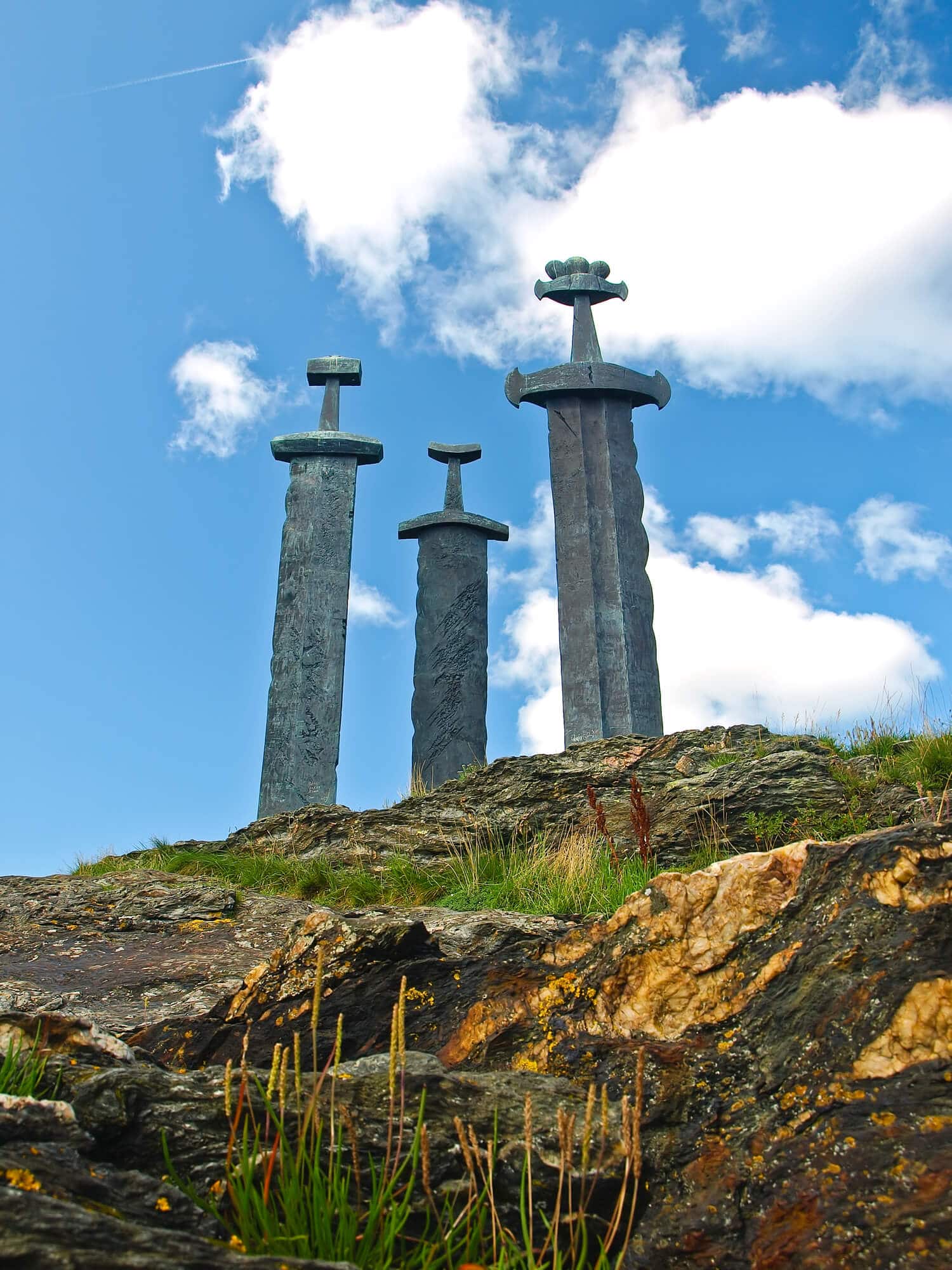
2. Norway is home to 28 stave churches
Norway’s most striking architectural «invention» has to be the stave church, which looks like something out of a fantasy novel. The stave churches feature intricate carvings, steeply pitched roofs, and a sense of timeless beauty that reflects the rich cultural and religious traditions of Norway.
During the Middle Ages, over 1,000 stave churches were probably built in Norway. Today, only 28 stave churches remain.
The earliest stave church still standing today is Urnes Stave Church which dates all the way back to the 12th century. And the largest is Heddal stave church, located in Notodden municipality in mystical Telemark.
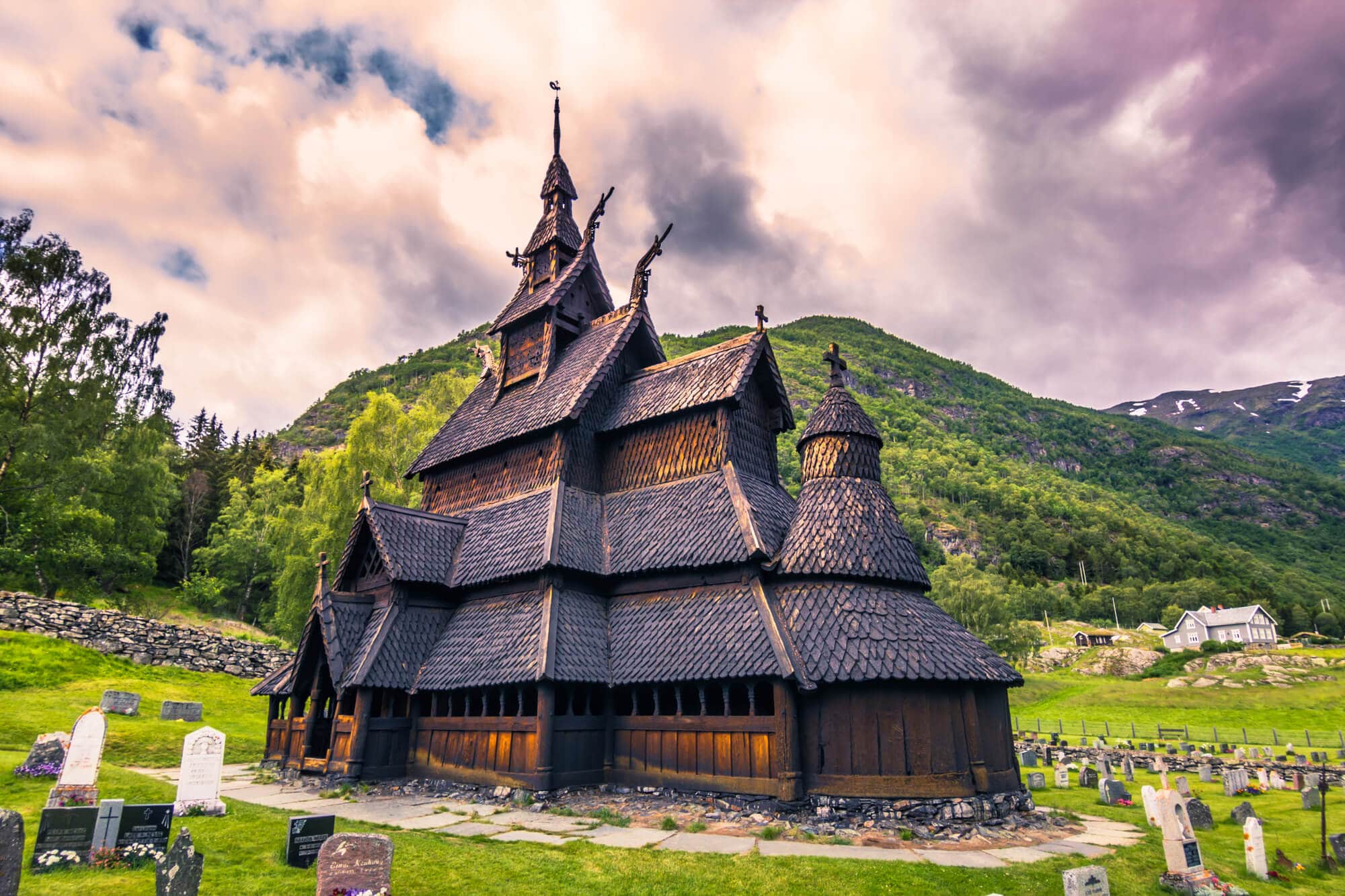
3. We have 1100 fjords in Norway
Norway has the largest concentration of fjords of any country in the world. In fact, we have over 1100 of them!
These majestic geological formations, carved by ancient glaciers, adorn the country’s coastline with their steep, towering cliffs and tranquil waters. So I definitely recommend making room for a fjord cruise in your Norway budget.
Sognefjorden, which stretches 205 km inland from the ocean, is the longest fjord in Norway and the second-longest in the world. While Geirangerfjorden is the most famous due to its dramatic landscape.
The only Norwegian UNESCO sites based on solely natural criteria are the Geirangerfjord and the Nærøyfjord in Western Norway.
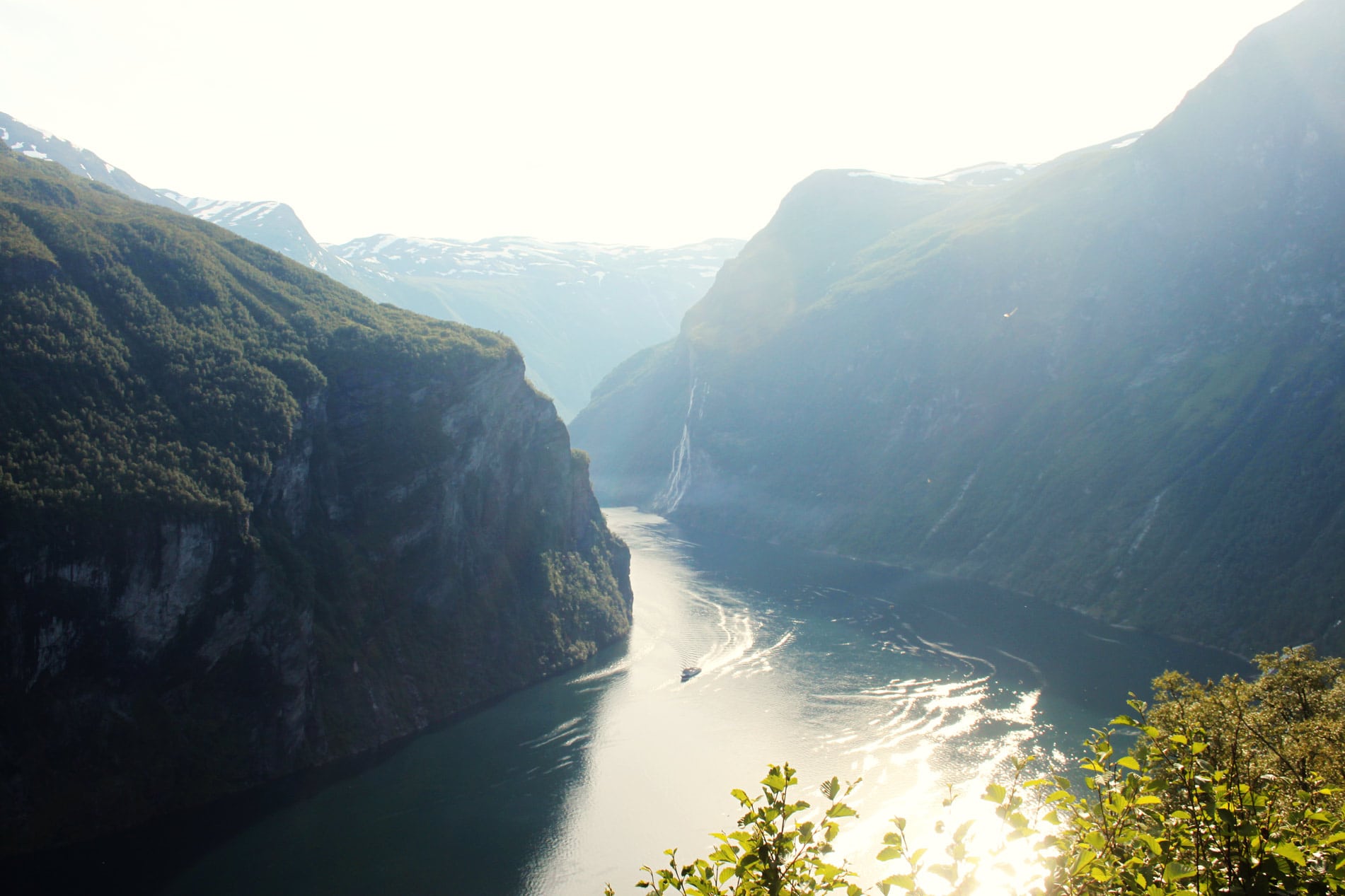
4. 10 of the world’s tallest waterfalls is in Norway
Another fun fact is that you find 10 of the world’s 30 tallest waterfalls in Norway. Vinnufossen at 860 meters is the tallest of them all and the 6th tallest in the world.
The 5th tallest waterfall in Norway is Langfossen, a spectacular waterfall and my personal favorite. Regarded as one of Norway’s most impressive waterfalls, Langfossen plunges dramatically from a height of 612 meters (2008 feet) down into the Akrafjorden fjord, running under the main highway.
While not the tallest, Steinsdalsfossen is one of Norway’s most iconic waterfalls. Located in the village of Steine in the municipality of Kvam in western Norway, this majestic waterfall cascades from a height of 46 meters (151 feet). What makes Steinsdalsfossen truly special is the walking path that leads visitors behind the waterfall.
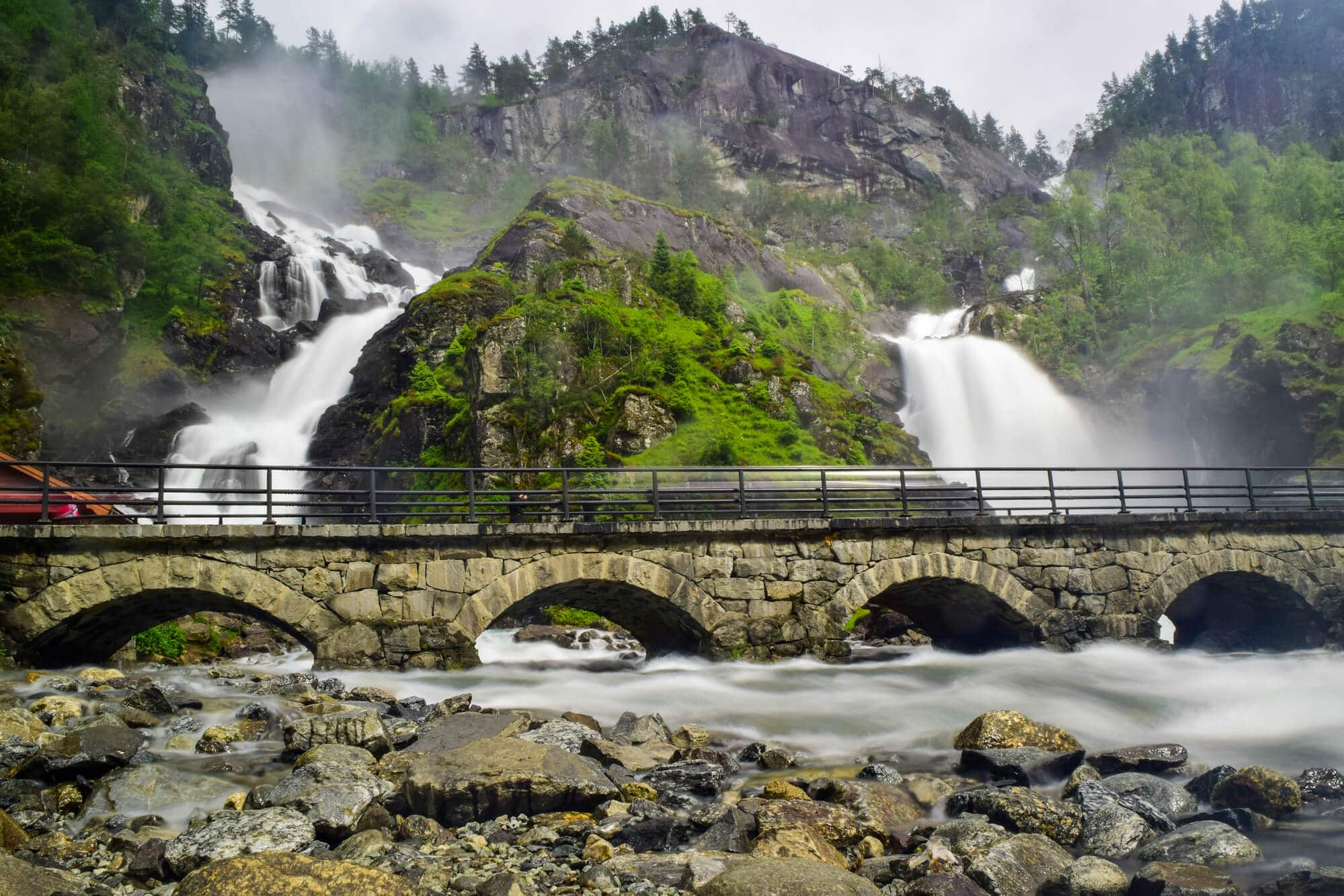
5. Kirkenes is farther east than Finland
Norway shares a border with Russia. Yes really. Kirkenes is located farther east than all of Finland. Situated in the northeastern part of Norway, near the country’s border with Russia, Kirkenes lies at a longitude that places it east of the easternmost point of Finland.
As one of the northernmost towns in Norway, Kirkenes experiences an Arctic climate, characterized by long, cold winters and relatively short, cool summers. This unique climate contributes to the town’s distinctive natural environment and seasonal activities such as dog sledding and Northern Lights viewing.
Another cool attraction is the Kirkenes Snowhotel offers guests a unique and unforgettable experience, allowing them to stay in intricately designed rooms made entirely of snow and ice. Each year, the hotel is rebuilt using snow and ice from the surrounding area, featuring stunning ice sculptures and artistic designs throughout its interior.
🔥 Pro tip >> You don’t have to stay at the Snowhotel to visit. Book your entrance tickets here.
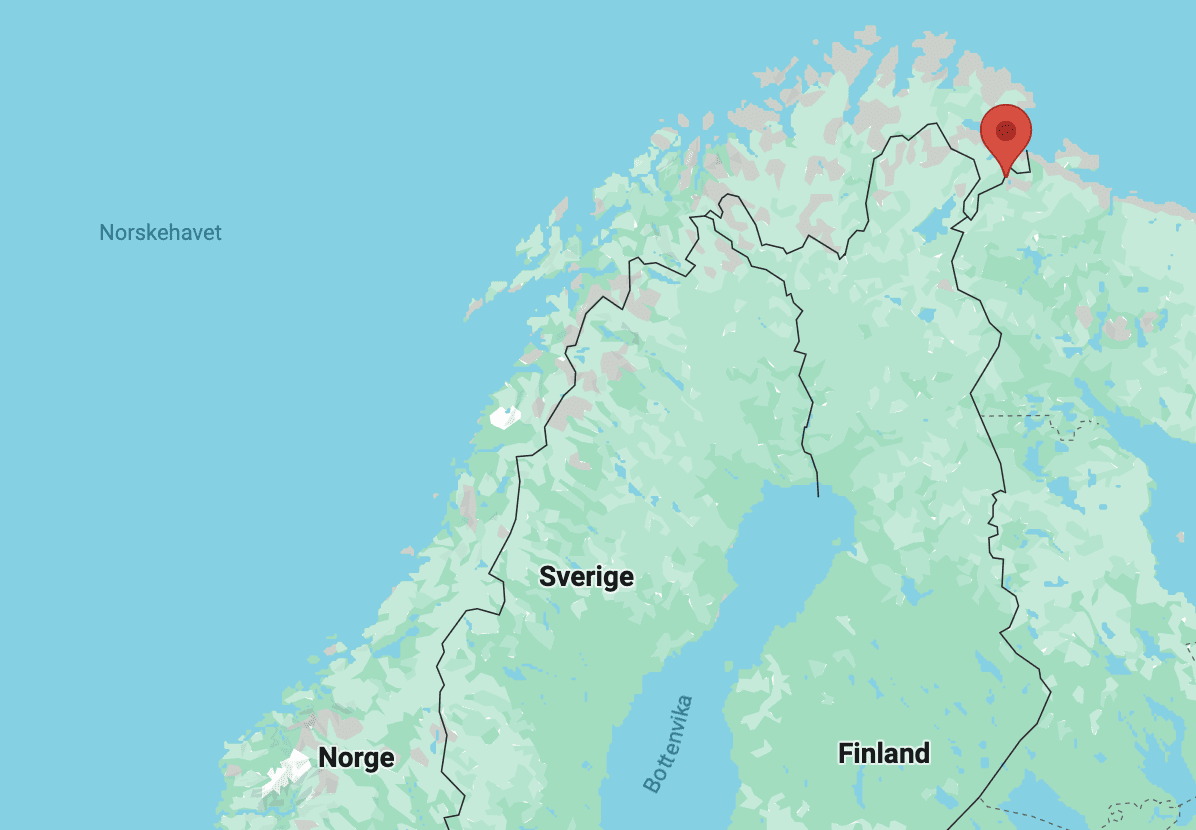
6. The world’s longest road tunnel is in Norway
Lærdalstunnelen connects Aurland and Lærdal in Vestland and is an astonishing 24,5 kilometers long. It’s divided into four sections, separated by three large mountain caves.
The main tunnel has white lights and the caves have blue lighting with yellow lights along the walls to give an impression of sunrise.
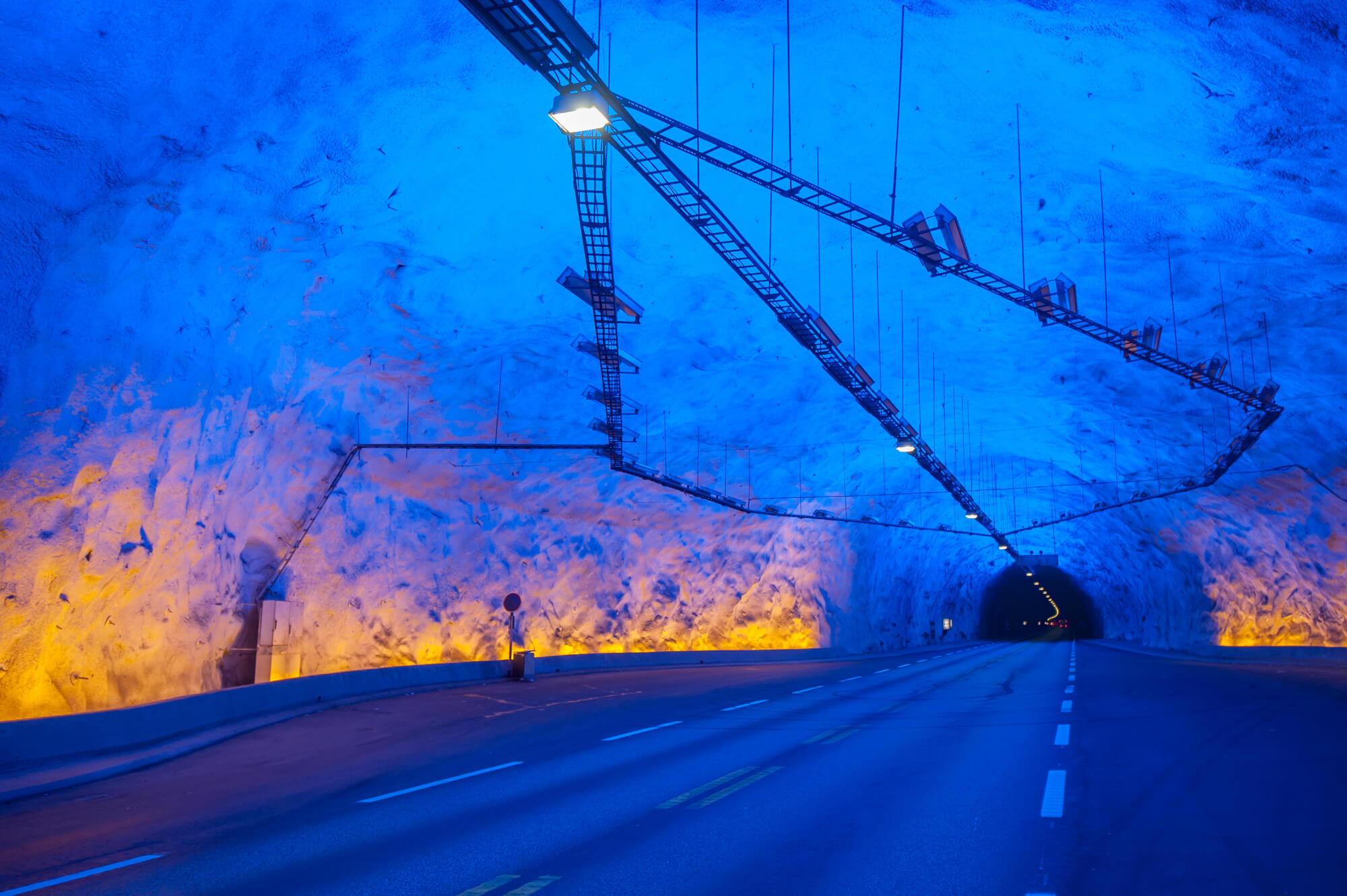
7. Norwegians read more books than any other country
Another Norway fun fact is that we read more books than any other country in the world (per capita). I think we read around 15 books on average a year. I’m guessing it’s because it’s so dark for many months of the year with little else to do. Also, books are tax-free in Norway.
During Easter, it is a well-established tradition in Norway for people to indulge in crime fiction, known as “Påskekrim” or Easter crime. In fact, there are even short crime stories written on our milk cartoons at Easter, and most of the famous authors in Norway write crime fiction.
Our enthusiasm for reading is reflected in Norway’s vibrant library scene, even the smallest town often has some sort of library. The Norwegian government also supports many reading initiatives and literary programs, further promoting a love of reading among its citizens.
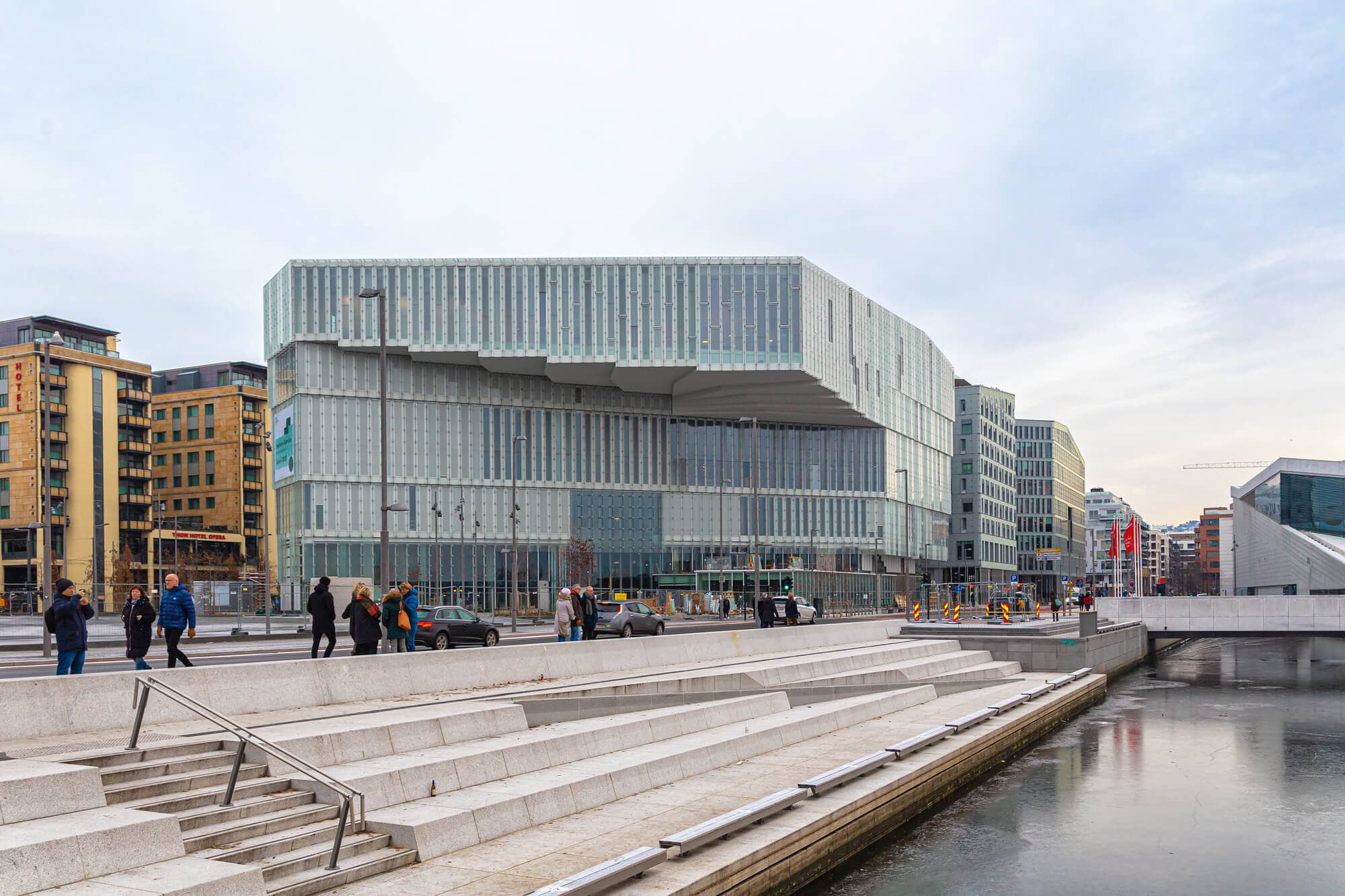
8. Norway has an active volcano
Beerenberg, located on Jan Mayen island around 1000 km west of mainland Norway, is the world’s northernmost volcano above sea level. It stands as a commanding natural wonder, reaching a height of 2,277 meters (7,470 feet) and dominating the island’s landscape with its snow-capped peak
This majestic volcano, named after Dutchman Jan Jacobszoon Beerenberg, is characterized by its impressive size and the dynamic interplay of fire and ice, as its summit is often shrouded in glacial ice despite the volcanic activity below.
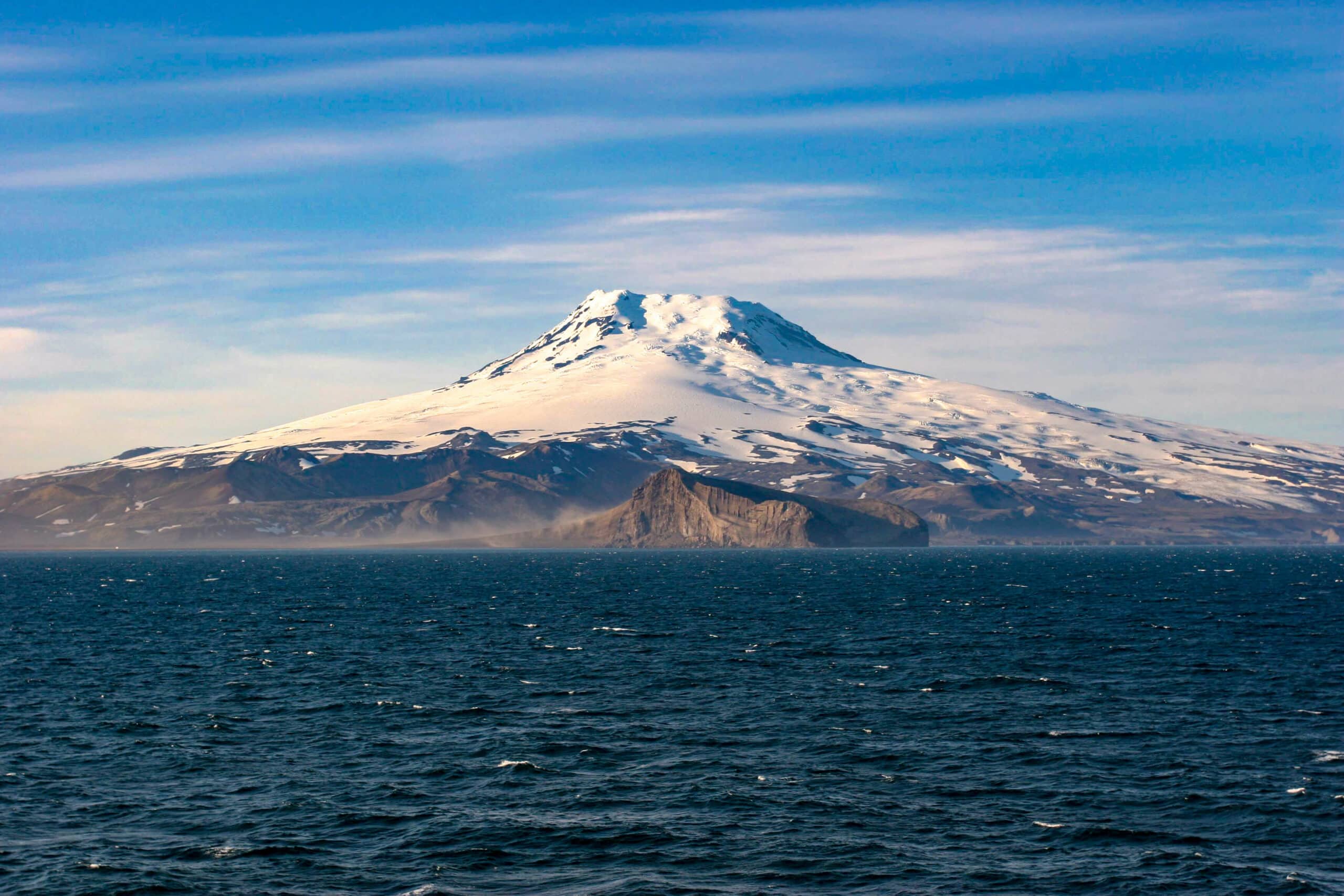
9. The world’s most remote island is a Norwegian territory
Bouvet Island is, according to Wikipedia, an uninhabited subantarctic high island located in the South Atlantic Ocean.
Discovered by the French explorer Jean-Baptiste Charles Bouvet de Lozier in 1739, the island has a history of limited human presence due to its harsh climate and challenging conditions.
Today, Bouvet Island is designated as a nature reserve, providing a protected habitat for various seabird species and marine life.
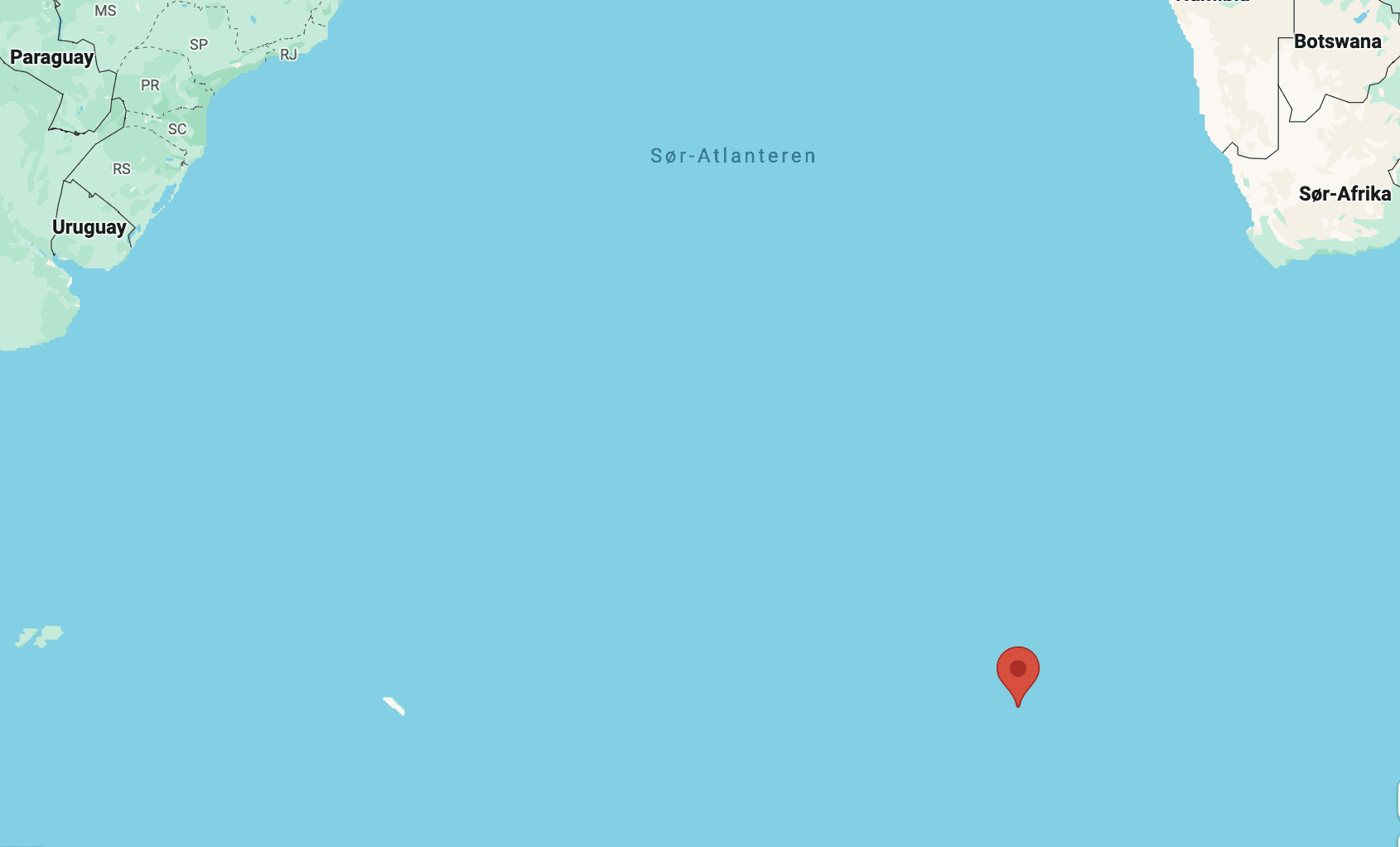
10. Half the world’s Sami population lives in Norway
The Sami people, also known as the Sámi, are an indigenous Finno-Ugric people inhabiting the northern regions of Norway, Sweden, Finland, and parts of Russia.
In Norway, the Sami have a rich cultural heritage and a distinct way of life that is deeply intertwined with the Arctic environment. Traditionally, the Sami have been semi-nomadic, relying on reindeer herding, fishing, and hunting for sustenance and livelihood.
Despite historical challenges and assimilation efforts, the Sami people have persevered in preserving their cultural heritage and asserting their rights.
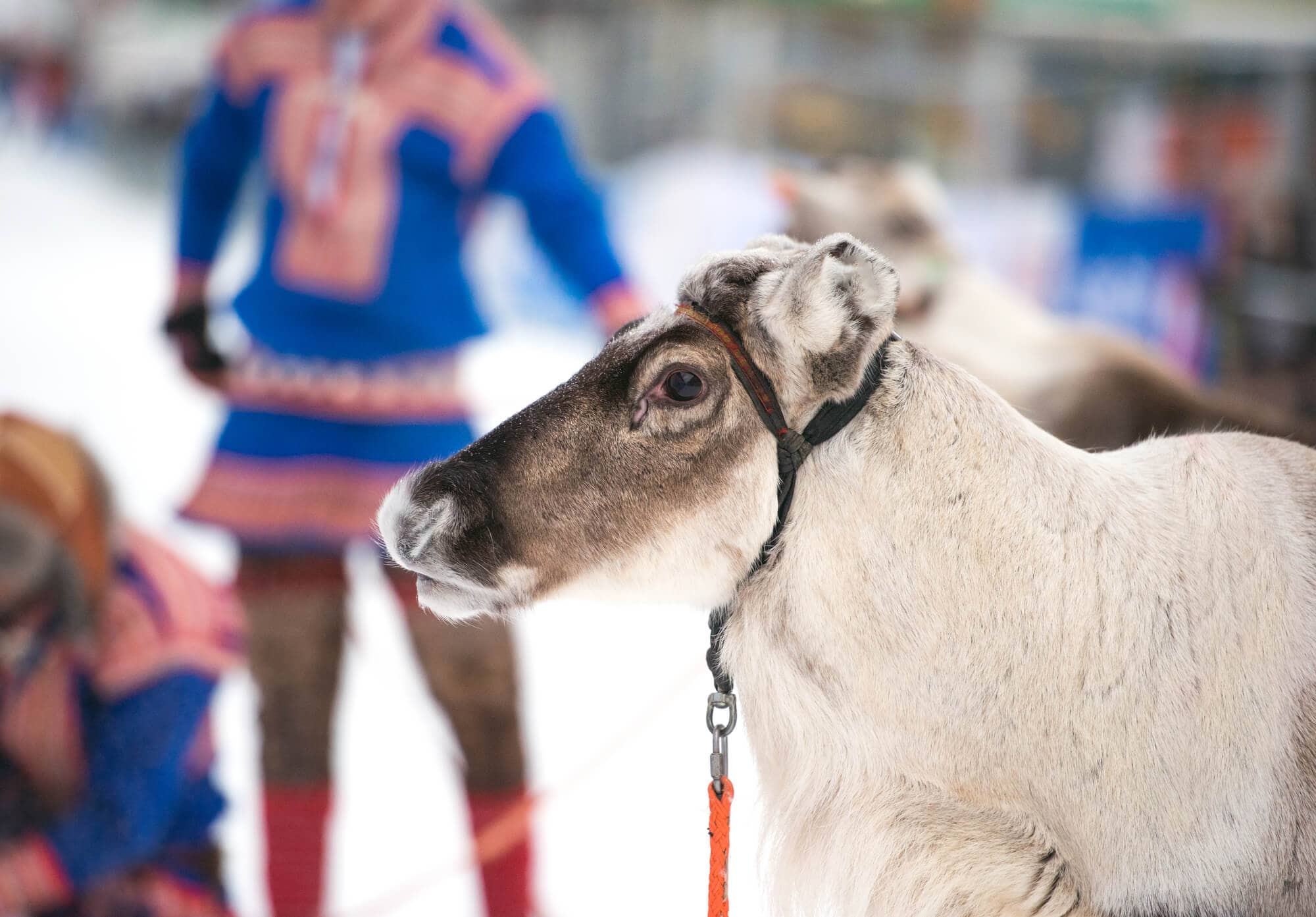
11. Europe’s largest herd of wild reindeer live in Norway
Europe’s largest herd of wild reindeer roams the expansive and captivating landscape of Hardangervidda, Europe’s largest mountain plateau.
The wild reindeer, known for their resilience and adaptability to the harsh Arctic environment, find sanctuary in the pristine and unspoiled expanses of Hardangervidda.
If you visit Norway you can witness these magnificent creatures in their natural habitat. Walking or cycling across Hardangervissa is one of the most Norwegian things you can do.
The conservation of the wild reindeer population in Hardangervidda underscores Norway’s commitment to preserving its natural heritage and fostering a harmonious coexistence between humans and wildlife.
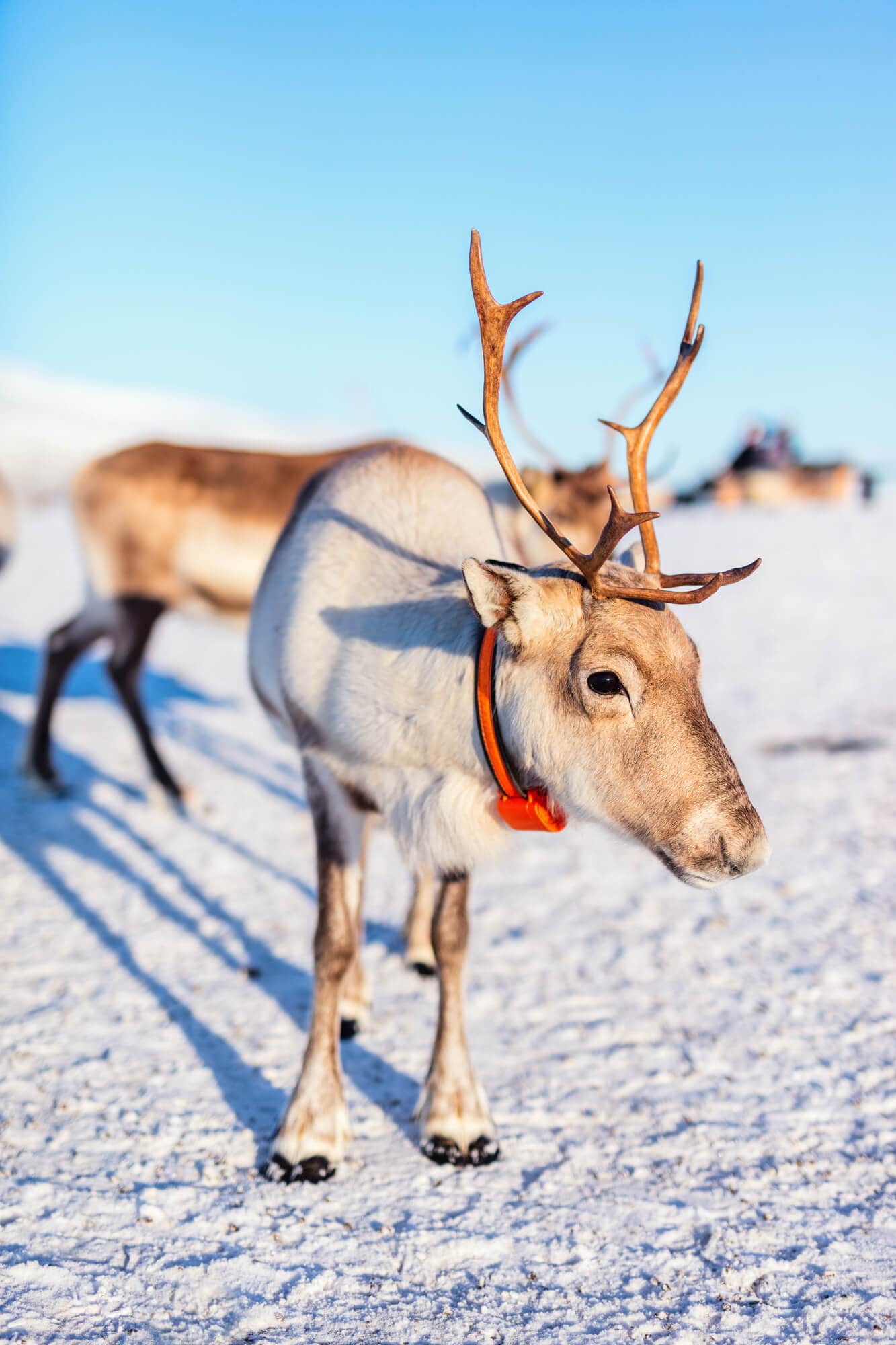
12. Our capital wasn’t always called Oslo
When the Vikings founded the city they named it Ánslo and during the Middle Ages, the name changed spelling to Óslo.
Then after a fire destroyed much of the medieval city in 1624, it was rebuilt and named Christiana (later spelled Kristiania) after the current king. It wasn’t until 1925 that the name was changed back to Oslo.
Is Oslo worth visiting? Yes, some will even say that it is one of the most underrated cities in the world.
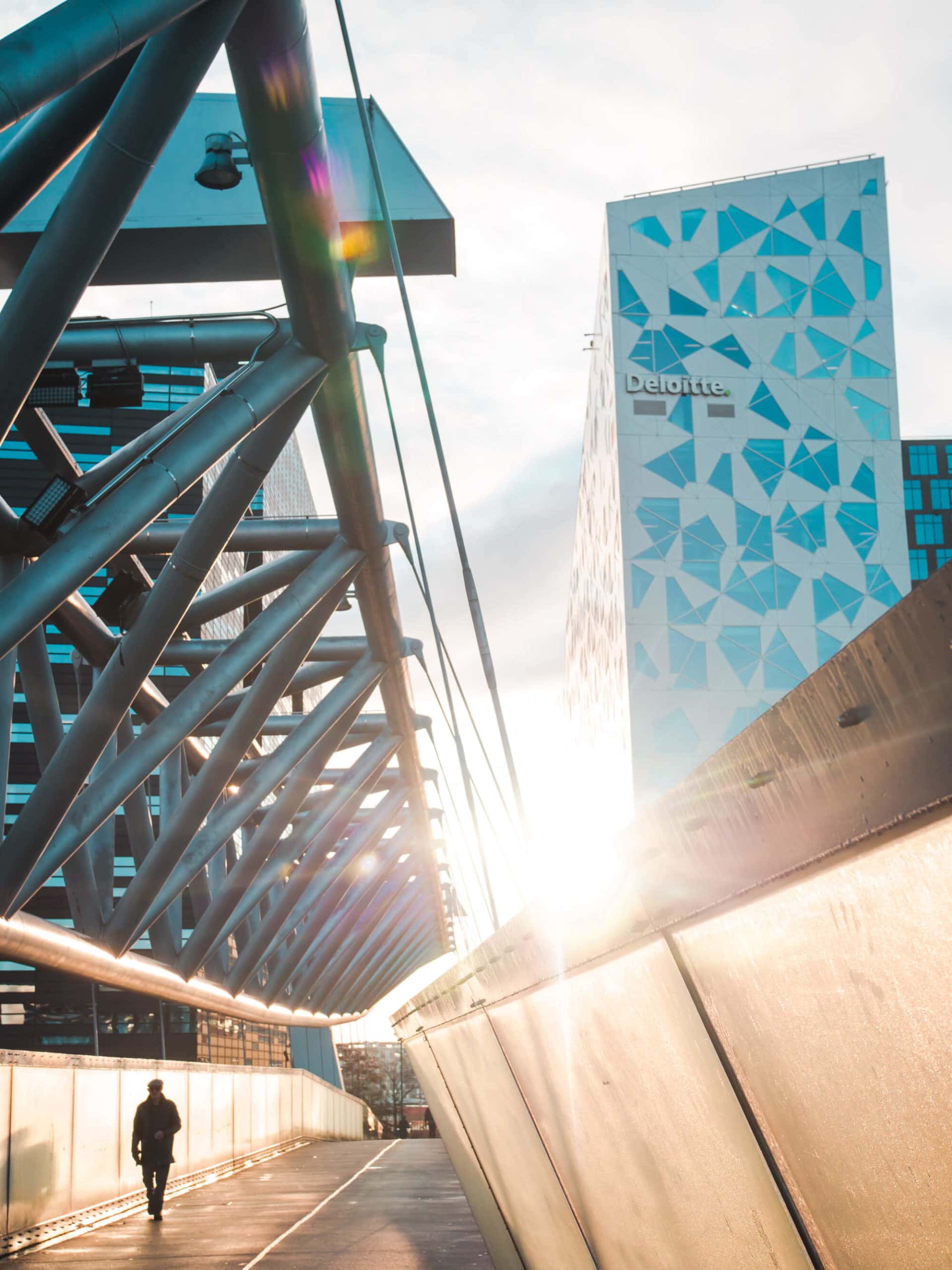
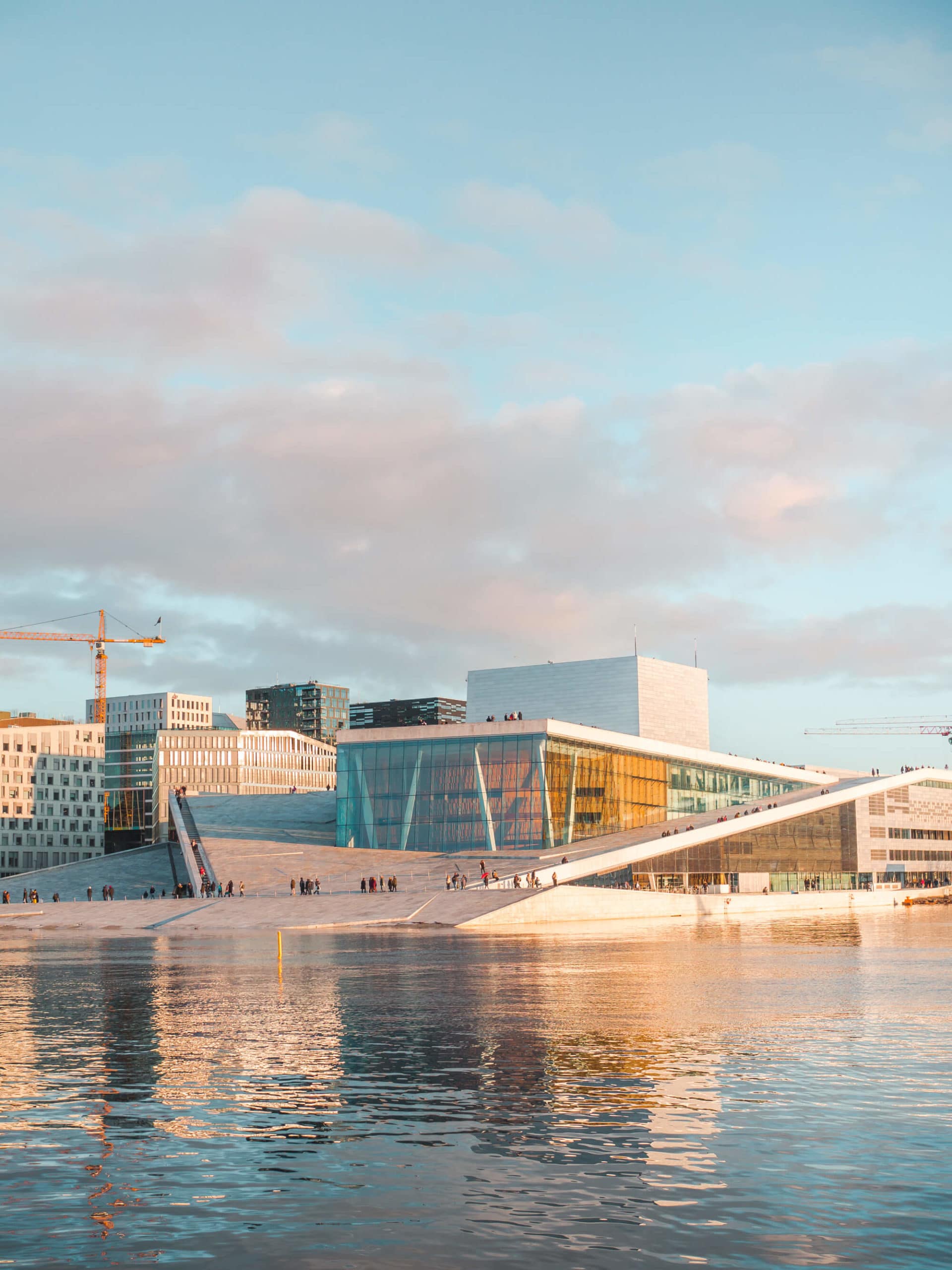
13. The Nobel Peace Prize is awarded in Oslo
Another interesting fun fact about Norway is that the Nobel Peace Prize, one of the most prestigious international awards, is awarded in Oslo annually.
Held at the Oslo City Hall on December 10th, the ceremony commemorates the anniversary of the death of Alfred Nobel. The event attracts worldwide attention and serves as a platform for recognizing and celebrating the remarkable efforts of peacemakers and advocates for social justice.
The decision to award the Nobel Peace Prize in Oslo is rooted in the provisions of Alfred Nobel’s will, which stipulated that the peace prize should be presented in the Norwegian capital. This tradition has continued since the first award ceremony in 1901.
14. King Harald vowed to remain unmarried
King Harald of Norway vowed to remain unmarried for life unless he could marry his true love. Sonja is the daughter of a clothing merchant and at the time it was controversial for a royal to marry a commoner.
They eventually married in 1968 with help from the Norwegian Government, 9 years after they first met. The king and queen are still married to this day, 55 years later.
King Harald, who was crowned in 1991, is the first Norwegian king born in Norway in 567 years.
15. Norway is one of the happiest countries in the world
According to various global happiness and well-being indices, Norway consistently ranks as one of the happiest countries in the world. Our high quality of life, social welfare systems, and emphasis on work-life balance contribute to Norway’s reputation as a beacon of happiness and contentment.
“The World Happiness Report is a landmark survey of the state of global happiness that ranks 156 countries by how happy their citizens perceive themselves to be.”
It ranks countries using the Gallup World Poll and six factors: levels of GDP, life expectancy, generosity, social support, freedom and corruption income.
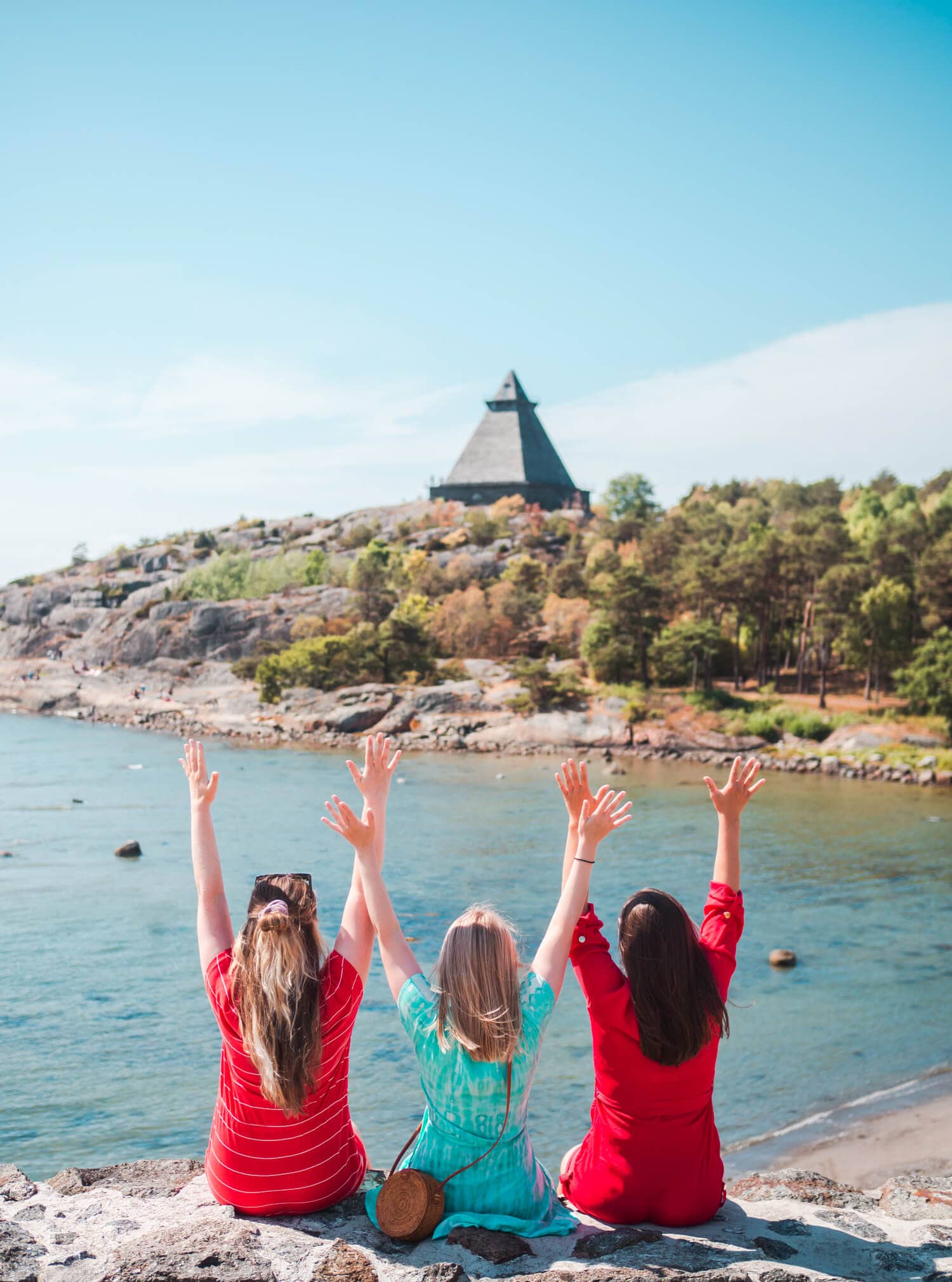
16. No one knows exactly how long Norway’s coastline is
If you draw a straight line along Norway’s sea borders it is around 2650 kilometers long.
However, once you add in all the bays, inlets and long fjords, the “real” length of its coastline could be over 25000 km (not counting islands and skerries).
17. We have the world’s largest deep-water coral reef
One of the fun facts about Norway you might not believe is that the world’s largest deep-water coral reef, called the Røst Reef, is located off the coast of Lofoten. It extends over a length of about 43 kilometers (27 miles), and has a width of up to 6.9 kilometers (4.3 miles).
The reef is generated by a coral species called Lophelia Pertusa and hosts an abundant marine population that ranges from plankton to fish. And the most interesting fact about Røst Reed is that it was discovered in 2002, only 21 years ago.
18. Hell is in Norway
You can go to Hell! No literally, it’s a small village outside Trondheim with around 1500 inhabitants. Despite its intriguing name, Hell is a charming and picturesque village known for its scenic surroundings and traditional Norwegian architecture.
Hell has become a popular tourist destination, attracting visitors who are drawn to the novelty of its name and the opportunity to take memorable photographs with the iconic “Welcome to Hell” sign at the local railway station. Tough hell in Norwegian only means slope.
19. Roald Dahl had Norwegian roots
Roald Dahl, the renowned author of beloved children’s books such as “Charlie and the Chocolate Factory” and “Matilda,” was born to Norwegian parents and spoke Norwegian.
His father, Harald Dahl, was from Sarpsborg and had emigrated to Wales, where Roald Dahl was born in the city of Llandaff. His mother, Sofie Magdalene Hesselberg, was also of Norwegian descent.
Dahl’s Norwegian heritage and upbringing played a significant role in shaping his identity and influencing his writing. Throughout his literary works, you can find traces of Norwegian folklore, language, and cultural references, which reflect his deep connection to his ancestral roots.
20. Norway introduced salmon sushi to Japan
In 1980, during an attempt to expand seafood exports, a Norwegian delegation suggested that the Japanese should use salmon in their sushi.
Salmon was not initially a traditional ingredient in sushi, however, through a concerted marketing effort and collaboration with Japanese chefs and restaurants.
Norwegian salmon gained popularity and recognition as a high-quality and versatile seafood option for sushi and sashimi. Yum!
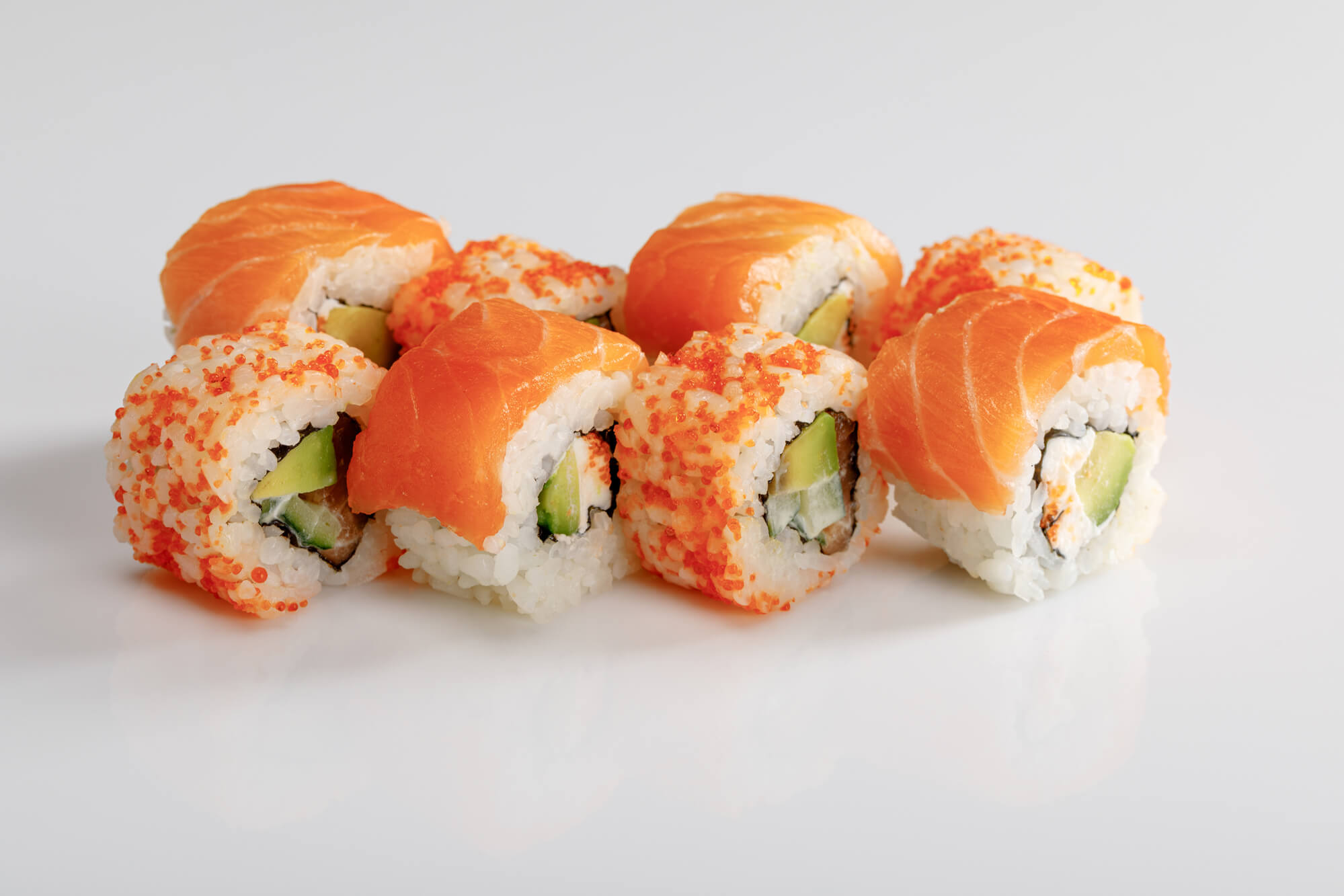
21. You can walk in the footsteps of Harry Hole
Many of Harry Hole’s favorite Oslo hangouts are real places you can visit. And just in case you didn’t know, detective “Harry Hole” is the main character in a series of popular crime novels written by Norwegian author Jo Nesbø.
The novels featuring the enigmatic and complex character of Harry Hole have garnered widespread acclaim and a global readership. In fact, his books have sold over 55 million copies and have been translated into more than 50 languages.
22. Norway remained neutral during WWI
During World War I, Norway maintained a policy of neutrality, choosing not to align itself with either side. This decision was influenced by Norway’s historical commitment to peaceful diplomacy and its desire to avoid being drawn into the conflict that engulfed much of Europe.
Despite its strategic location and economic ties to neighboring countries involved in the war, Norway managed to uphold its neutral stance, allowing it to navigate the tumultuous period without direct military involvement.
And we tried to do the same During WWII but we all know that didn’t last long.
23. The Christmas tree in Trafalgar Square is from Norway
Every year, Norway presents a towering Christmas tree to the city of London as a symbol of gratitude and remembrance for the support and solidarity extended by the people of Britain during World War II.
The tree is prominently displayed in Trafalgar Square and is typically adorned with beautiful lights The longstanding tradition dates back to 1947.
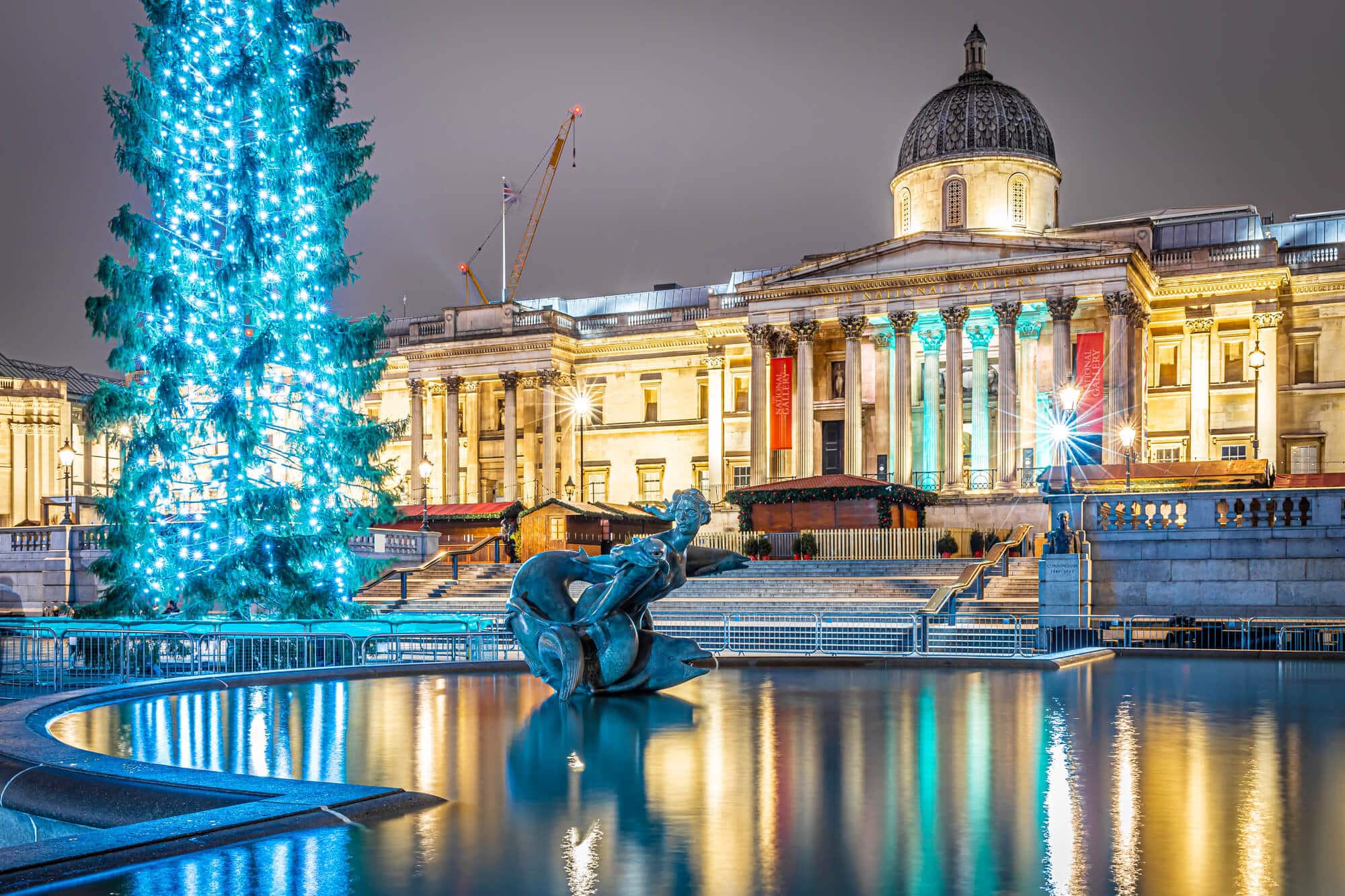
24. We knighted a penguin
In 2008 we knighted a penguin…Yes really! Brigadier Sir Nils Olav III, a king penguin, is the mascot and colonel-in-chief of His Majesty The King’s Guard.
The tradition of awarding military titles to penguins named Nils Olav dates back to 1972. When the Norwegian King’s Guard visited the Royal Edinburgh Military Tattoo in 1961 for a drill display, Major Nils Egelien fell in love with the zoo’s penguin colony. The regal march of the king penguins reminded him of how the Norwegian King’s Guard soldiers marched.
When they returned to Edinburgh in 1972 Egelien arranged for the regiment to adopt a king penguin as their military mascot.
25. Income and wealth is public record
The income and wealth of all residents in Norway are public record. Up until 2013, we could look up anyone without them knowing. These days, however, you can tell who has been looking at your numbers if they are accessed directly.
Some newspapers create lists that you can still look through anonymously. I can’t for the life of me understand why this is necessary.
28. The cheese slicer is Norwegian
In 1925 Norwegian Thor Bjørklund patented the model of cheese slicer most of us use today, known as an ostehøvel in Norwegian.
Bjørklund was a carpenter from Lillehammer and his creation revolutionized the way cheese is sliced and served. It quickly gained popularity both in Norway and internationally.
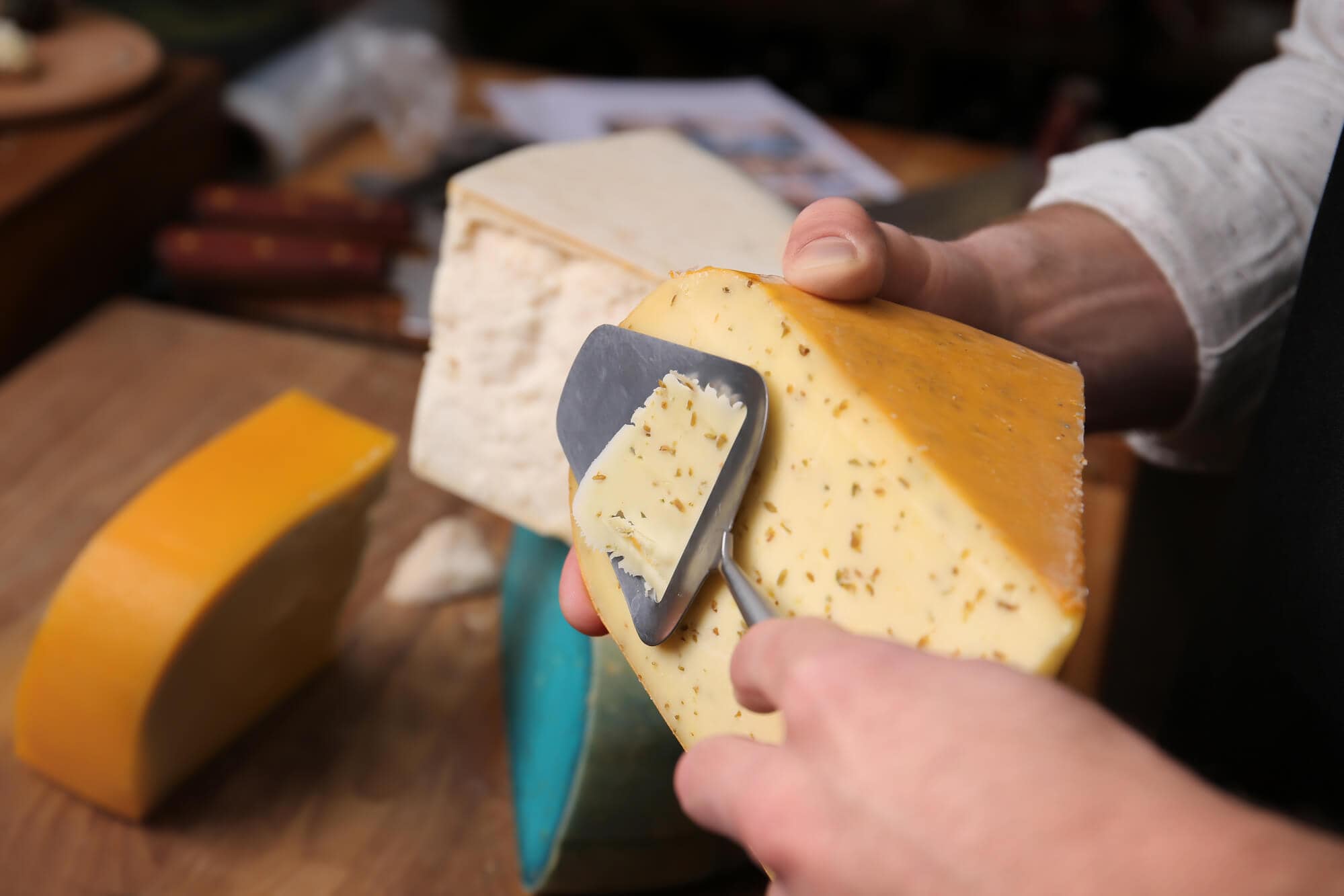
29. Boyfriend/girlfriend is gender-neutral
Another cool Norway fun fact is that the Norwegian word for boyfriend/girlfriend is gender-neutral. The term “kjæreste” is commonly used to refer to a romantic partner, regardless of the person’s gender, and translates to “dearest”.
30. There are two forms of Norwegian
Today there are two official forms of the Norwegian language. Bokmål (which translates to “book tongue”) and Nynorsk (new Norwegian), each with its own dialects and variants.
Bokmå evolved from Danish and was heavily influenced by Danish rule and administration during Norway’s union with Denmark. It is the most widely used written form of Norwegian and is predominant in urban areas and eastern parts of the country.
On the other hand, Nynorsk was developed in the 19th century as a way to create a written standard that reflected the linguistic diversity of Norway’s rural areas and regional dialects. About 12% of the population use Nynorsk and for the rest of us, Nynorsk is a mandatory subject in school.
31. Norwegian power production is almost 100% renewable
Despite what you might think, Norway isn’t powered by oil. Norwegian power production is almost 100% renewable and emission-free and around 95% of our domestic power usage is drawn from hydropower plants.
Our country benefits from an abundance of hydroelectric power, which accounts for the majority of our electricity production. Norway’s extensive network of rivers and mountainous terrain provides ideal conditions for the development of hydropower facilities, making it a leading producer of hydroelectricity in Europe.
Vemork
Another Norway fun fact is that Vemork hydropower plant in Rjukan was the world’s largest when it was put into operation in 1911. It played a significant role during World War II due to its ability to produce heavy water.
The Allies recognized the importance of preventing the Germans from acquiring heavy water and thus launched a series of operations to sabotage the plant. Norwegian resistance fighters and British commandos successfully destroyed the plant’s heavy water production capabilities.
Today, the Vemork plant serves as a museum and a testament to the daring efforts of those who sought to prevent the production of nuclear weapons during the war.
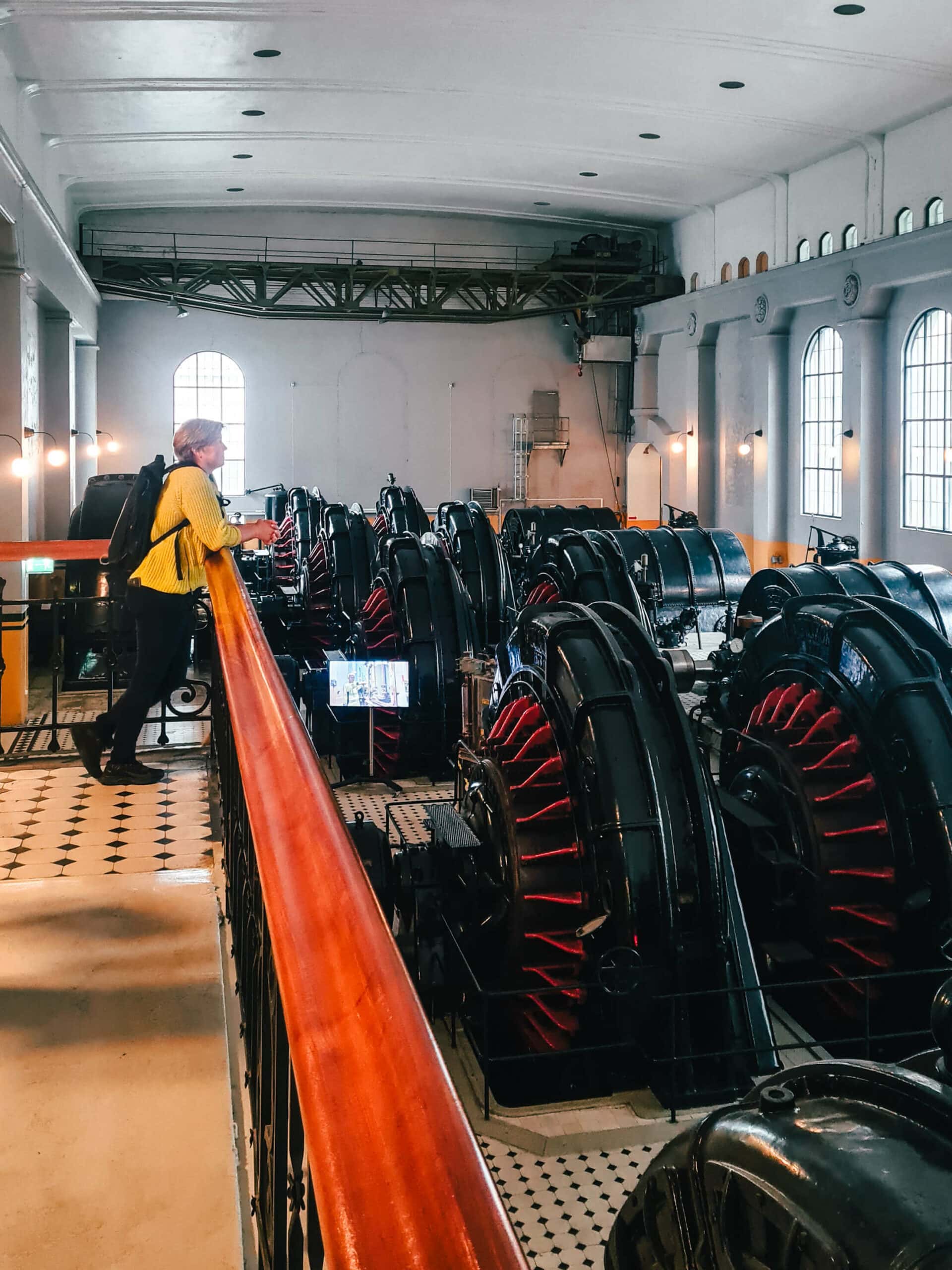
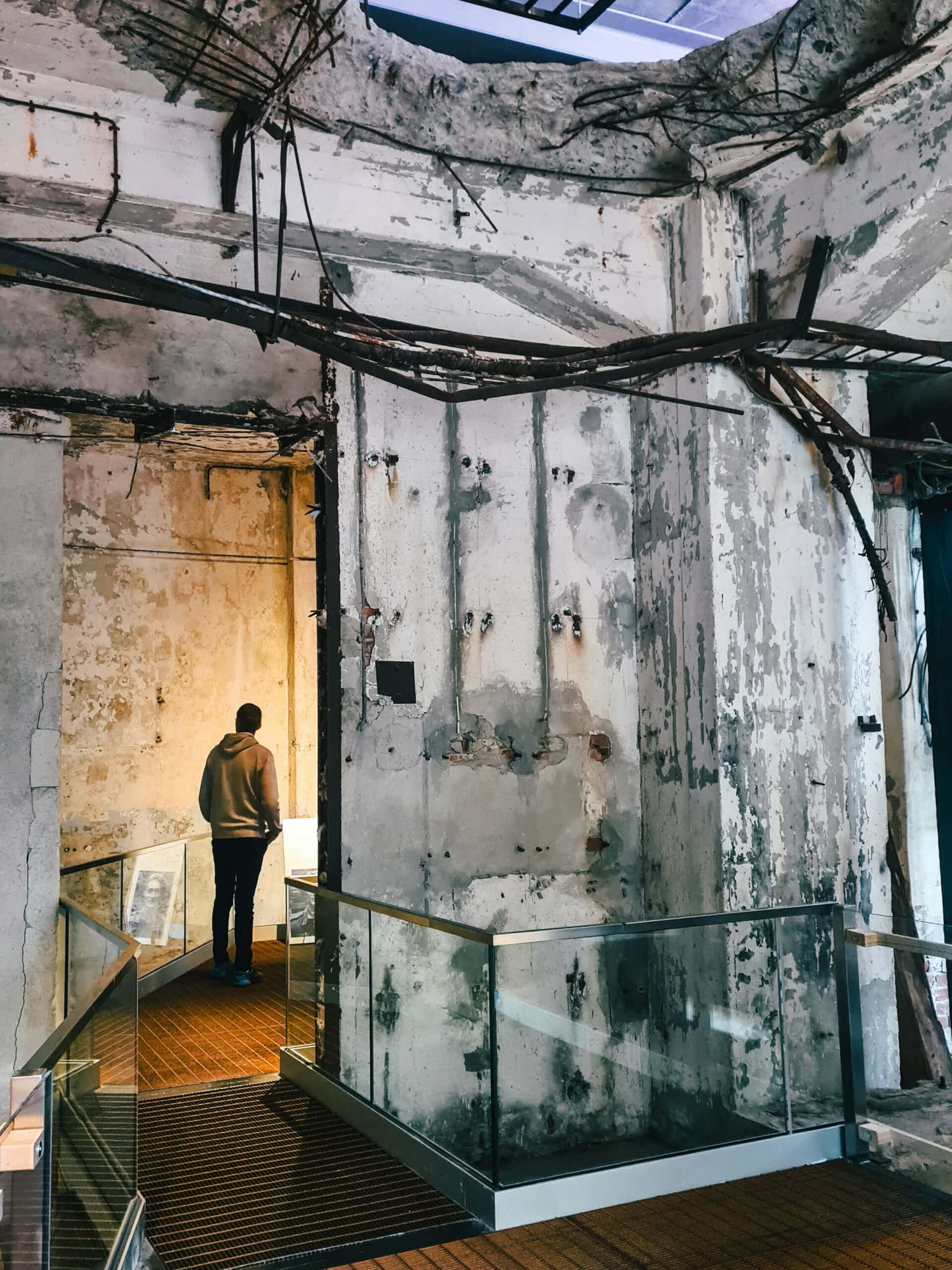
32. Recycling is a way of life in Norway
Recycling is a way of life here in Norway and almost every household has different trash cans for food waste, plastic, glass and metal, paper and nonrecyclables.
Another fun fact is that Norway’s plastic recycling scheme is the best in the world. We recycle about 97% of our bottles and soda cans using a PANT-system.
We pay a small “deposit” every time we buy a bottle or can and then get it back when we return it. It’s common for children to collect bottles from parks and beaches etc. in their spare time to earn a little bit of money.
Norway also has the largest number of electric cars per capita in the world. We are serious about taking care of our nature. If I see someone litter or even throw paper or plastic in the nonrecyclables, I get physically ill. No jokes.

33. Modern skiing was invented in Norway
Sondre Norheim from Morgedal, born in 1825, is the man most often credited with the invention of what is now known as Telemark skiing.
Norheim’s influence on skiing was profound, as he introduced a more dynamic and fluid skiing style that involved a distinctive Telemark turn, where the skier bends one leg while keeping the other extended. This technique revolutionized skiing and laid the foundation for modern skiing maneuvers.
In Norway, skiing has been an integral part of everyday life, transportation, and recreation for centuries. My grandfather still tells us stories from when he had to ski for 2 hours through deep snow to get to school.
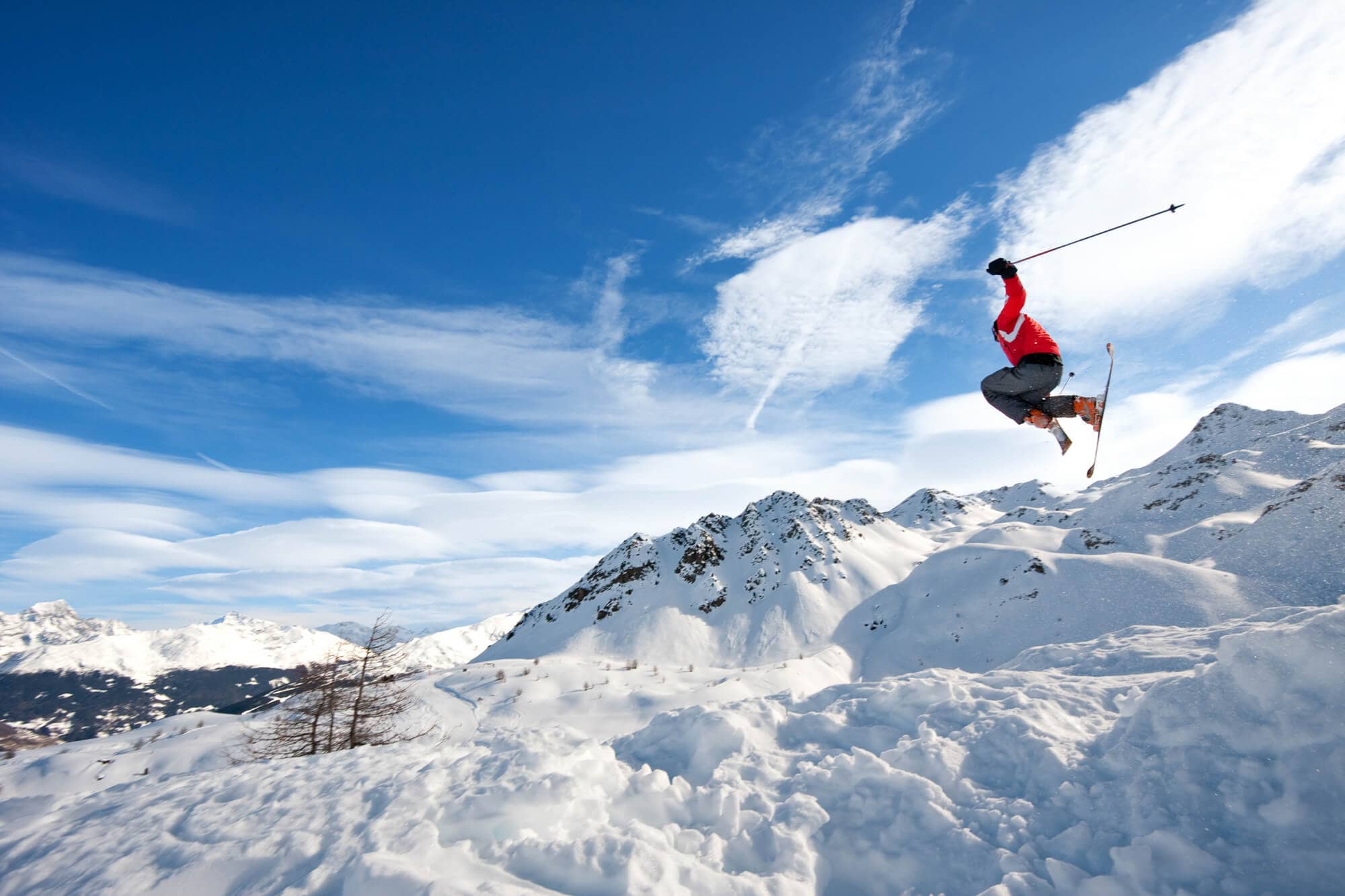
34. Norway has won 405 medals at the Winter Olympics
Norway holds the record for the most medals won at the Winter Olympics. We have won 405 total medals including 148 gold medals, both considerably more than any other nation in Winter Olympic history.
Our country has consistently performed well in various winter sports disciplines, including cross-country skiing, biathlon, ski jumping, and speed skating, among others.
Norway’s success in the Winter Olympics reflects its strong tradition and culture of winter sports, as well as its investment in athletic development and training.
35. There are no polar bears on the mainland
Contrary to popular belief, polar bears do not roam the streets in mainland Norway. Not even in the far north. They are however known to wander close to town in Svalbard. So if you plan to go beyond the town limits of Longyearbyen, you have to bring a weapon for safety.
The polar bear population on Svalbard is one of the most studied and monitored in the world, as the area provides crucial habitat for these magnificent animals.
Polar bears in Svalbard rely on sea ice as a platform for hunting seals, their primary prey. However, the rapid decline of sea ice due to climate change poses a significant threat to the polar bear population in the region.
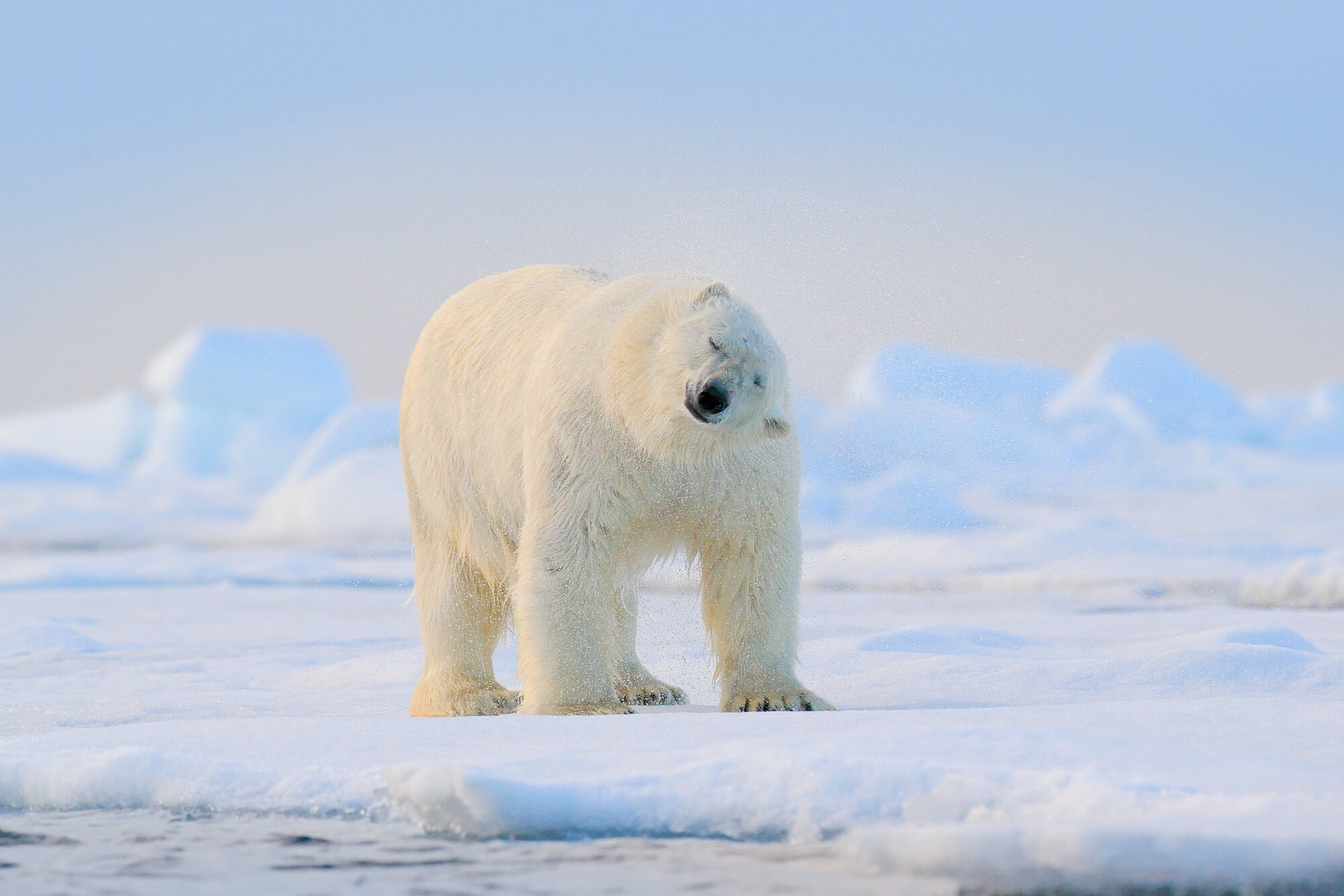
36. Norway’s coat of arms features a lion
One would think our national coat of arms would feature a moose or maybe even a bear but it’s actually a rather exotic animal, the lion.
The use of the lion in the coat of arms can be traced back to the medieval era when various European monarchies and noble families adopted the lion as a symbol of strength, courage, and royalty. It is also a symbol of the Christian faith.
The adoption of the lion in the coat of arms also reflects Norway’s historical relationship with Denmark and Sweden, both of which also use the lion in their respective coats of arms.
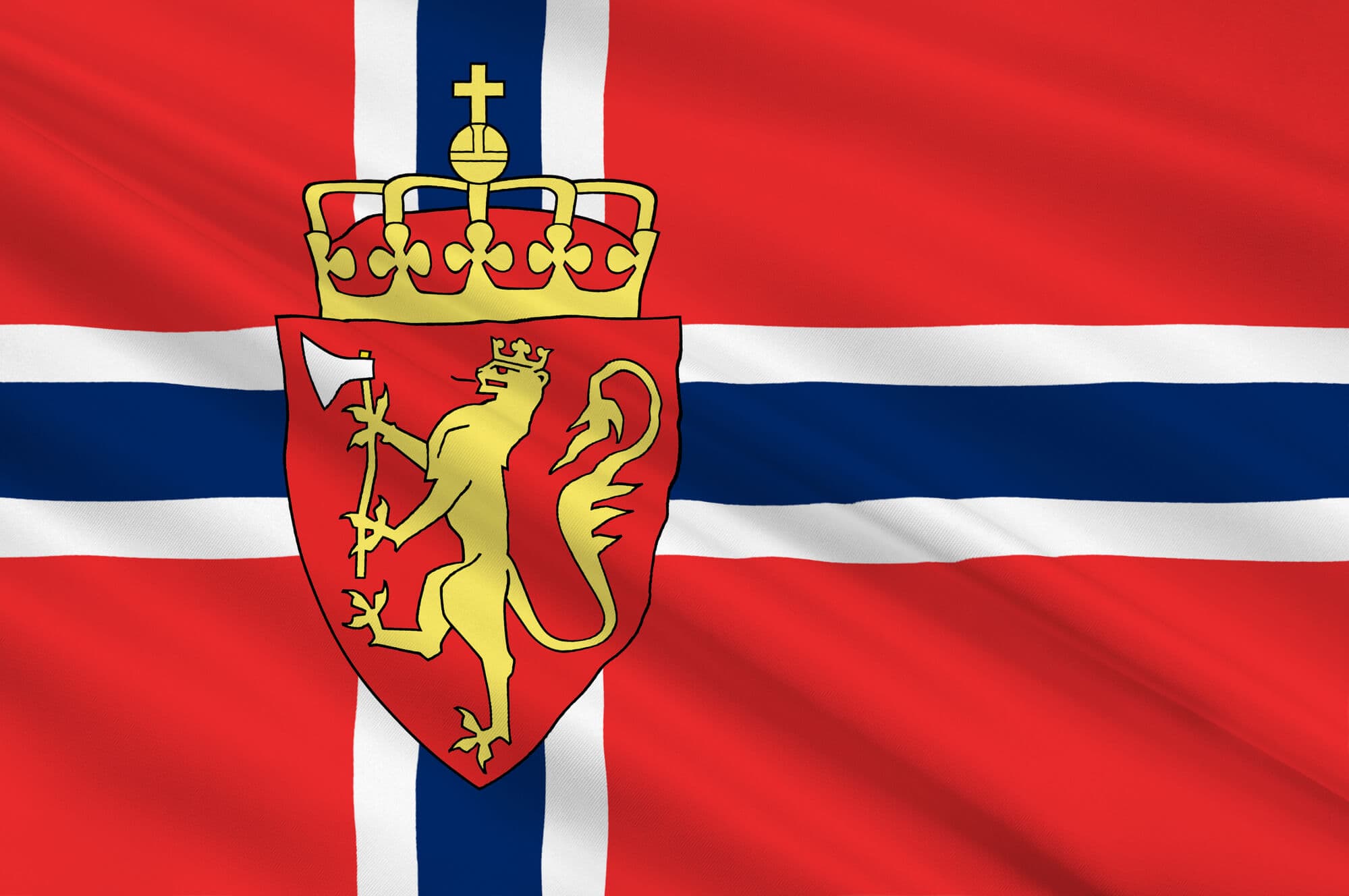
37. Norway is one of the world’s biggest consumers of coffee
Coffee holds a special place in Norwegian culture and is an integral part of daily life for many Norwegians. Annually, Norwegians consume around 9 kilos of coffee per person.
Norwegians often gather for “kaffepause” (coffee breaks), which are cherished social rituals that provide an opportunity for relaxation and conversation. Whether at work, at home, or in social settings, sharing a cup of coffee is a common and cherished practice in Norway.
Though, I’m not one of them. In fact, I can’t stand the taste and have never had a cup of coffee!
38. Sale of alcohol is restricted
Wine and liquor are only sold in tax-frees and state-controlled stores called Vinmonopolet (the wine monopoly).
Beer and other beverages with an alcohol content lower than 4.75%, can be sold in grocery stores and other licensed establishments, but only until 8:00 pm on weekdays and 6:00 pm on weekends and holidays.
The strict regulations governing the sale of alcohol in Norway are aimed at promoting responsible consumption and minimizing the negative social and health impacts associated with excessive alcohol use.
39. Alcohol is insanely expensive
Norway is the world’s most expensive country to buy a beer in (at least we used to be, Iceland might have us beat at the moment). And cocktails are even worse, they often taste like water, which is why we do most of our drinking before we go out.
It is so expensive because taxes are applied to all alcoholic drinks containing more than 0.7% alcohol. The rules are the same for alcohol produced in Norway and imports.
Another fun fact about Norway is that we get so excited when the weather is nice enough to sit outside and have a beer that we actually have a word for it; Utepils.
40. Grandiosa is our unofficial national dish
Every year Norwegians consume around 25 million frozen pizzas from the brand Grandiosa. Which is a lot for a population of just over 5.4 million people.
One reason for the popularity of Grandiosa pizzas is their early introduction to the Norwegian market, back in the 1980s. Over the years, Grandiosa has established itself as a trusted and familiar brand, with a wide range of pizza varieties that cater to diverse tastes and preferences.
I think it is delicious, however, most of my friends from other countries think it tastes like cardboard.
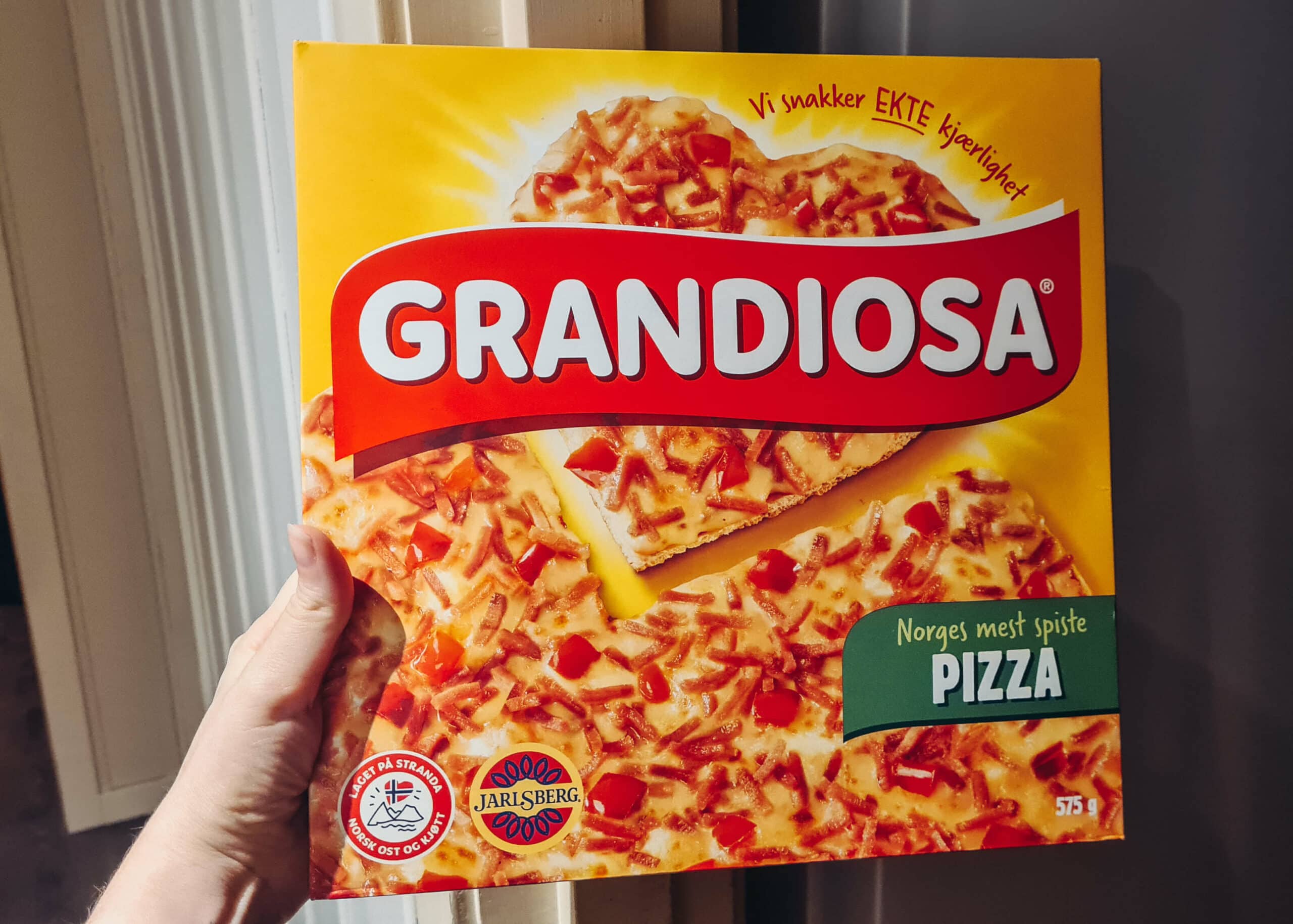
41. In 1971 Norway abolished life imprisonment
Norway’s maximum sentence is now only 21 years. The prison system in Norway is widely regarded as successful due to its emphasis on rehabilitation, humane treatment of inmates, and focus on reintegration into society.
This approach to incarceration has resulted in relatively low recidivism rates, around 20%.
Another fun fact about Norway is that we have a minimum security island prison called Bastøy Prison. They aim to become “the first ecological prison in the world” and report reoffending rates as low as 16%.
42. Our graduation celebration is a month-long partyWhen Norwegians graduate high school we have a traditional celebration called russefeiring. It’s basically a month-long crazy party, ending on our Constitution Day, the 17th of May. Everyone dresses up in mainly red, blue or black suits, depending on what school you attended.
One of the hallmark features of russefeiring is the use of russebuss, custom-decorated vans and buses that serve as mobile party venues.
These buses are often decorated with elaborate designs, sound systems, and entertainment facilities, providing a festive and communal space for the russ to socialize and celebrate. Some save up to the russefeiring for years.
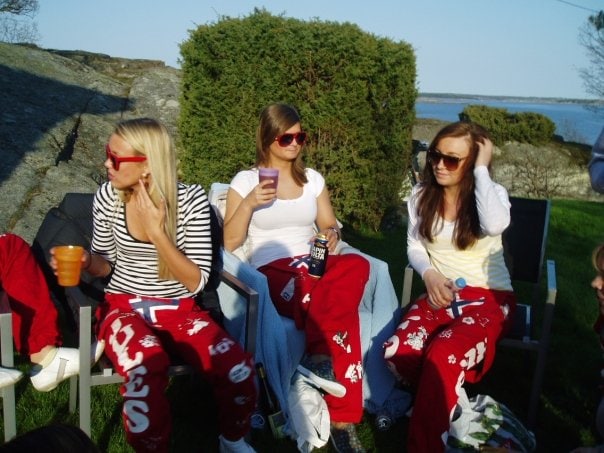
Popular Norway travel guides
- Hadeland Glassverk: History & Design just one hour from Oslo
- Norway Budget Breakdown: How much does one week in Norway cost?
- 10 incredibly beautiful beaches you won’t believe exist in Norway!
- 50+ popular Norway Instagram hashtags & feature accounts
- 20+ useful words & phrases in Norwegian for travelers
- The ultimate Norway bucket list: top 200 awesome things to do!
Disclaimer: I’ve bought some of the photos in this article from Depositphotos, my favorite stock photo site.
Remember to pin this for later 😉
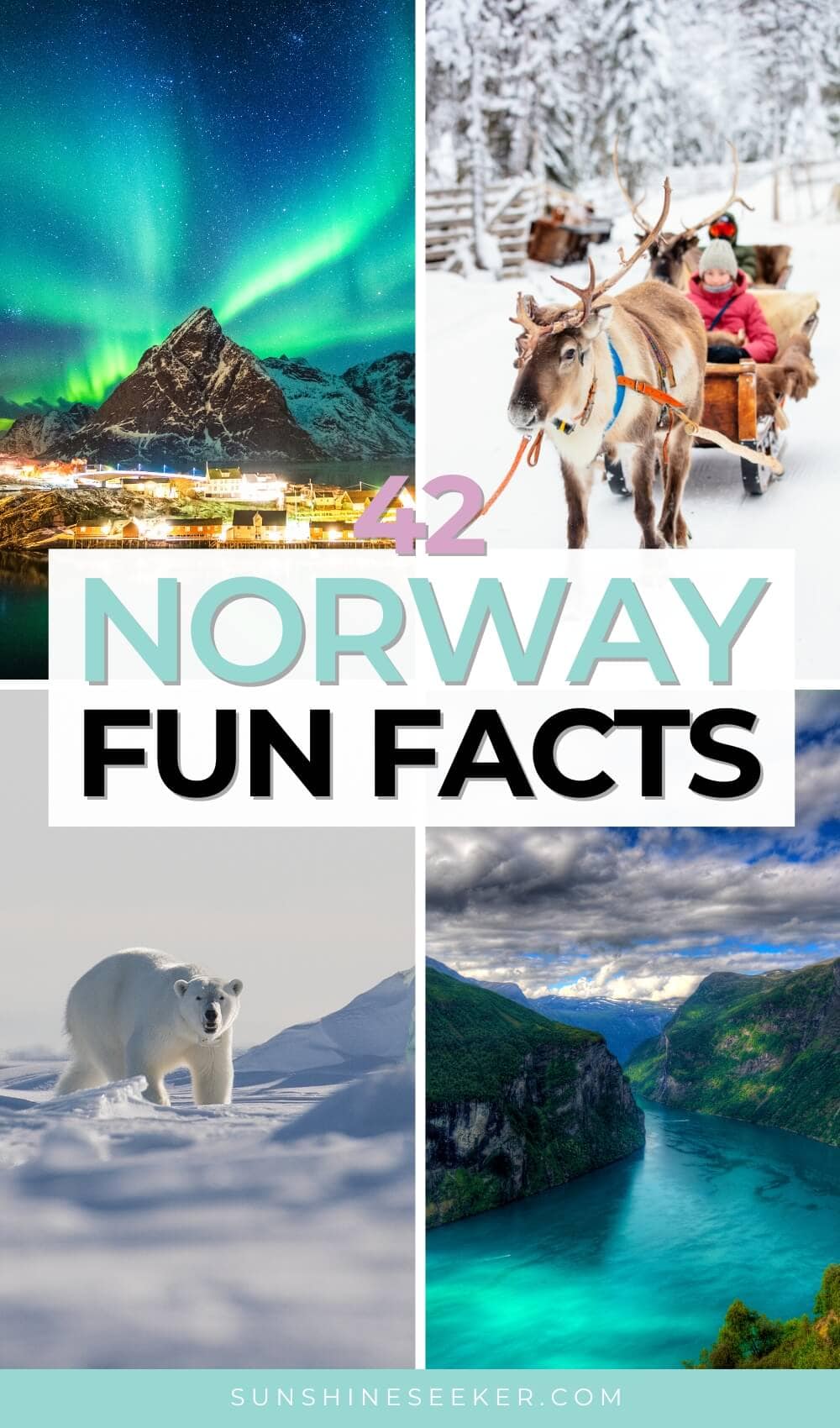
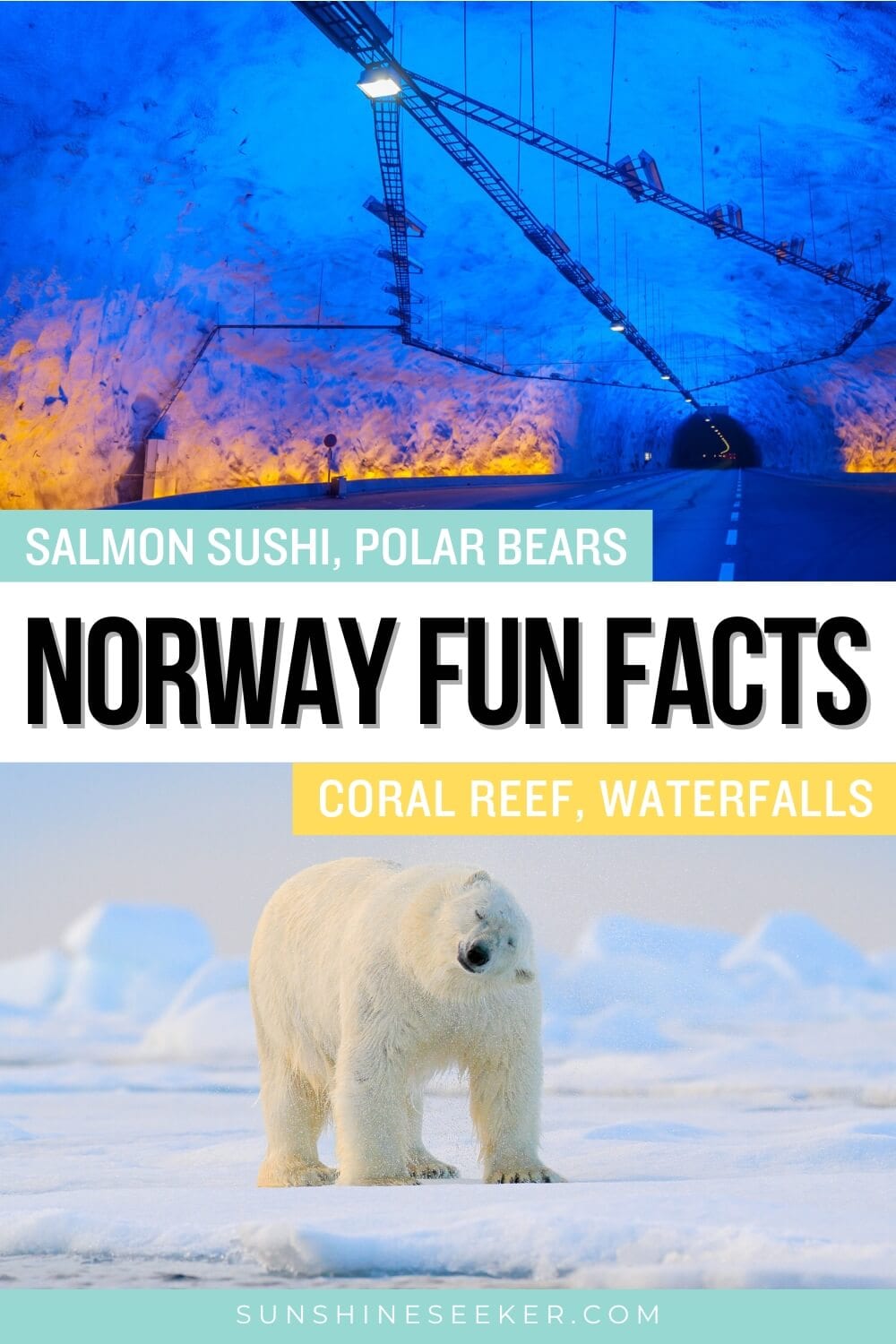


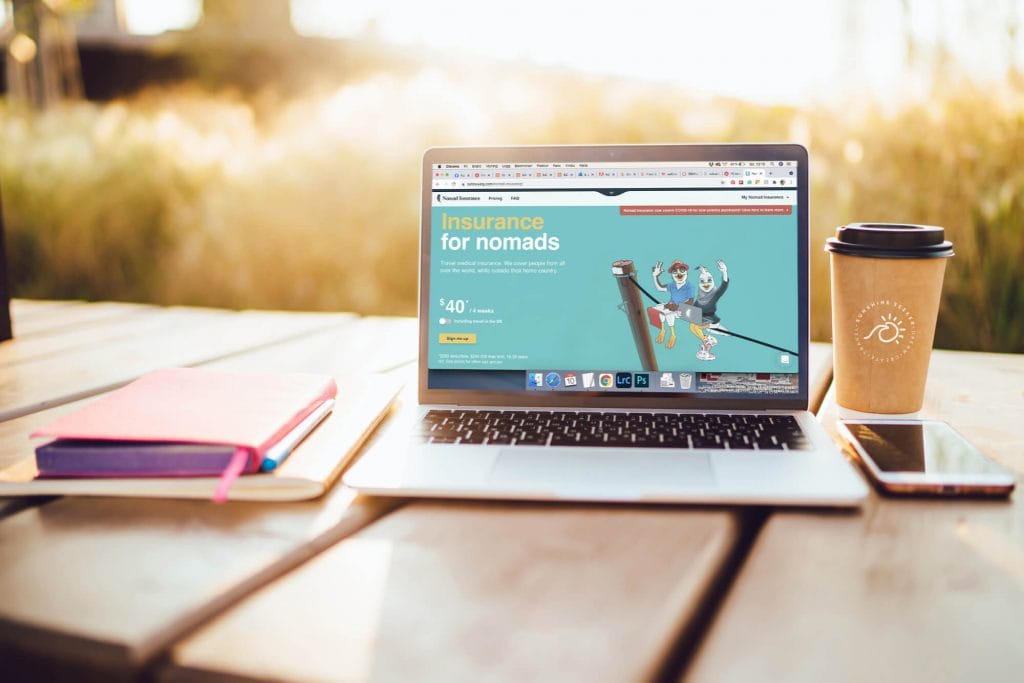
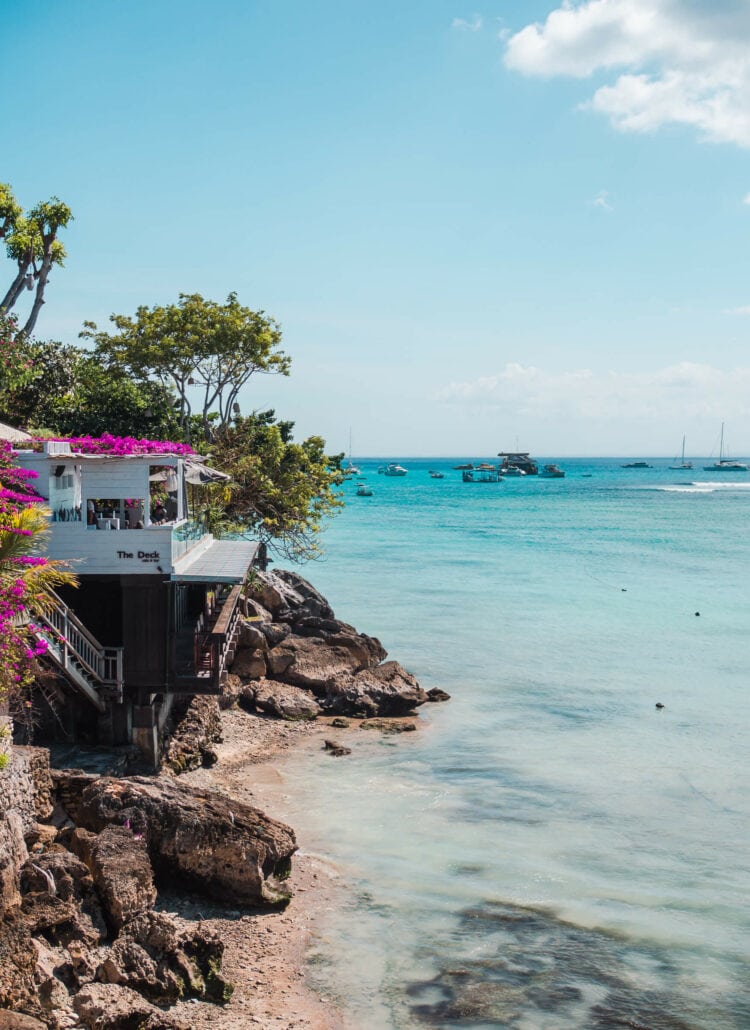
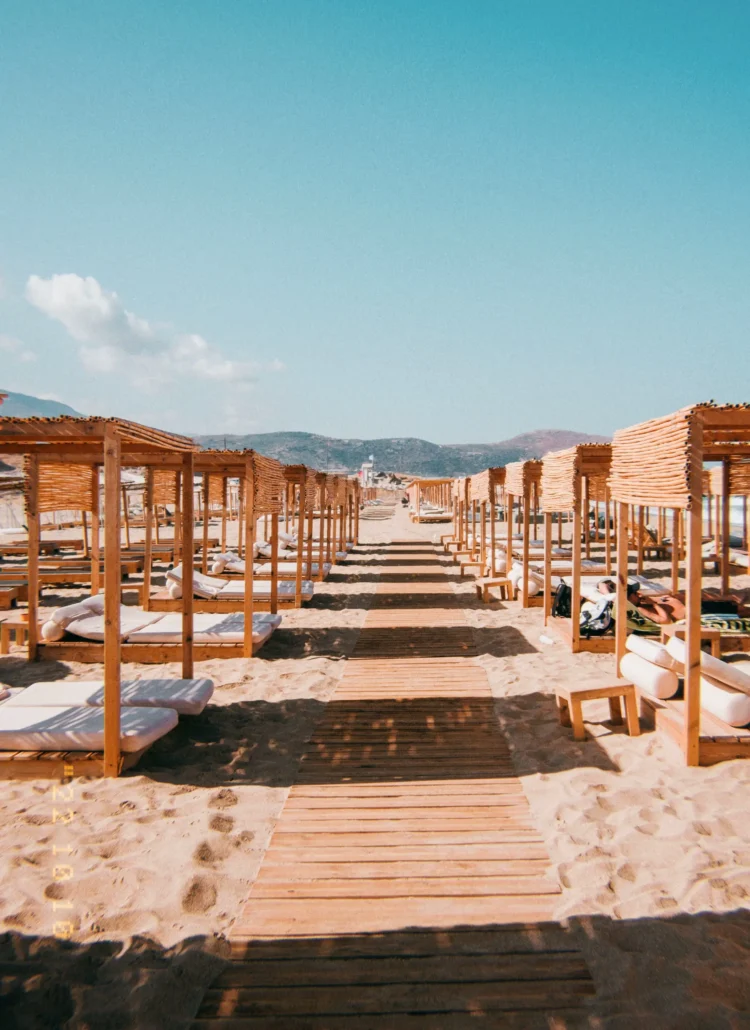
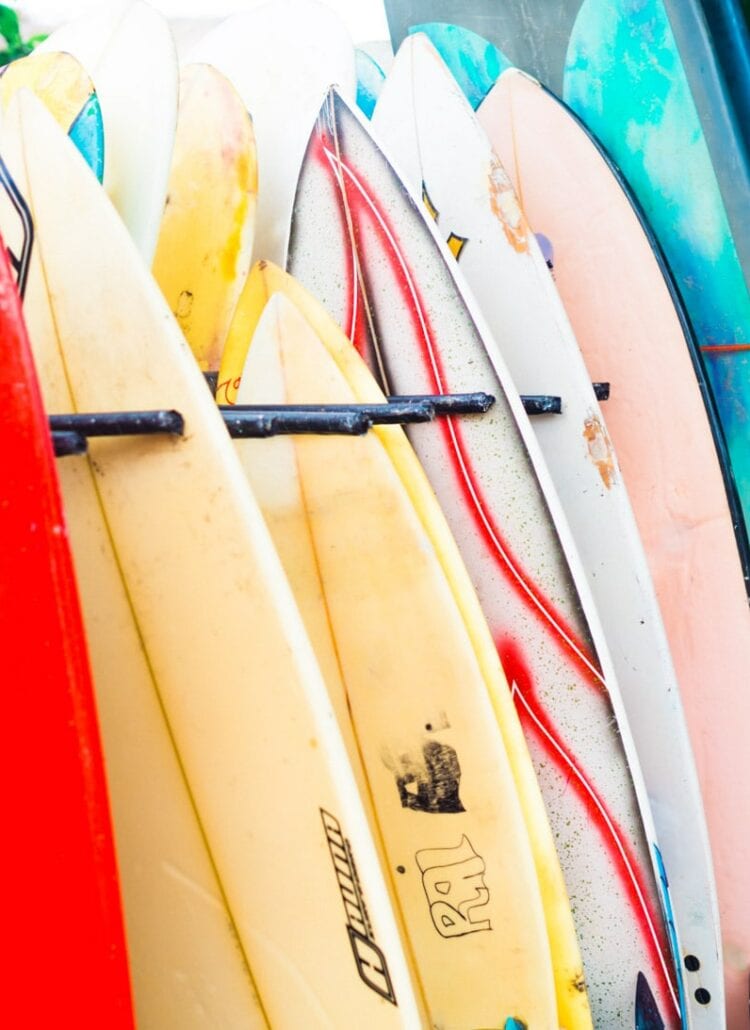

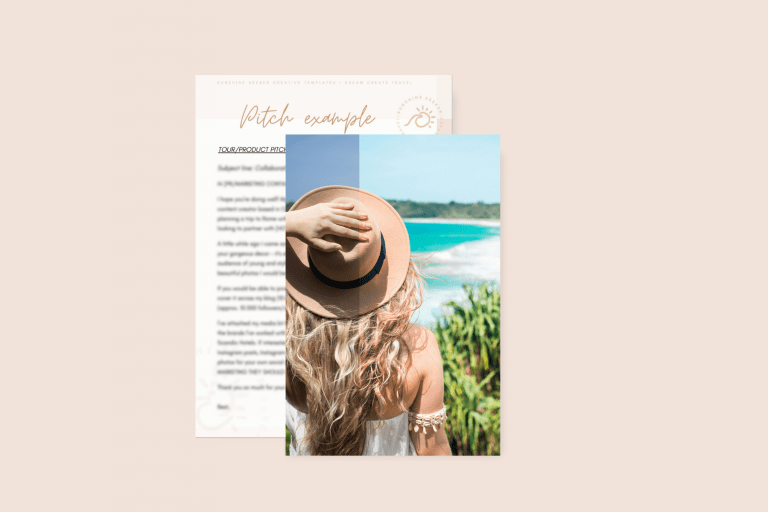


Some of these were so cool! I’m impressed you found so many!
Thanks, Poppy 🙂
Love this post! I feel like I learned so much and some of these I was surprised to learn! I’m a scuba diver so finding out there is a coral reef there is so cool! I’d definitely want to see the many fjords, drive that crazy long tunnel and see some waterfalls! Saving this for when I get the chance to go one day!
I’m happy you liked it, Vanessa 😀 I hope you visit Norway one day, such a beautiful country!
I hardly knew any of these facts about Norway. I kind like the architecture of the Heddal Stave Church. It’s so beautiful, it looks unreal. Would love to see it one day.
Yes, our stave churches are definitely worth a visit! Thanks for stopping by Mayi 🙂
So fun to read, even for a Norwegian like myself. The ones I didn’t already know blew my mind, like that salmon fact! Herlig innlegg, Charlotte 🙂
Tusen takk, Tina 😀 Jeg lærte en del når jeg gjorde research til artikkelen selv!
Loved reading all those facts! I have learned many fun things! I will try to remember them!
Thanks Ophelie 😀 I’m happy you liked it!
I love this post! As a Norwegian, I still learned heaps of new things about my country:)
Takk Linn 😀 Det var gøy å høre!
Norway was never on my bucket list but now reading this post has made me drool over it like anything. Your pics and the facts posted here have intrigued me a lot and I hope to visit this country some day soon.
I’m so happy to hear that 😀 Norway is such a beautiful country and definitely worth a visit!